

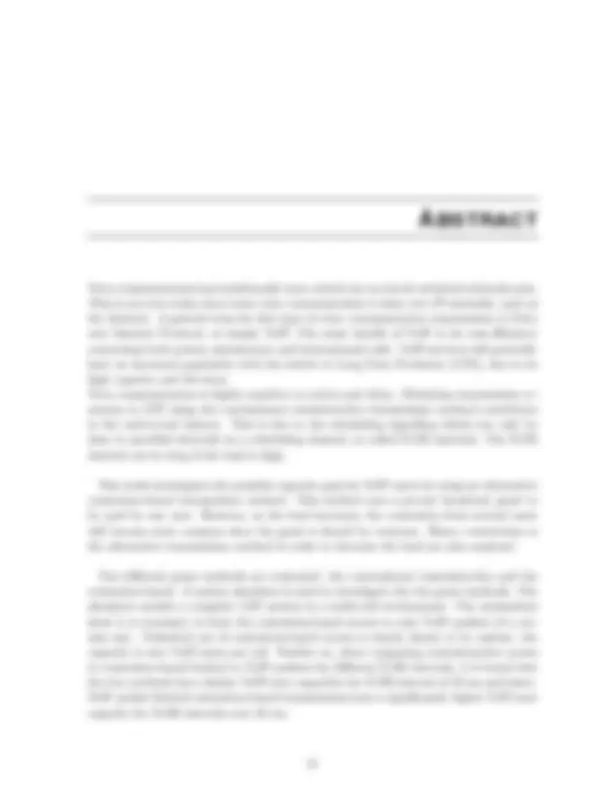

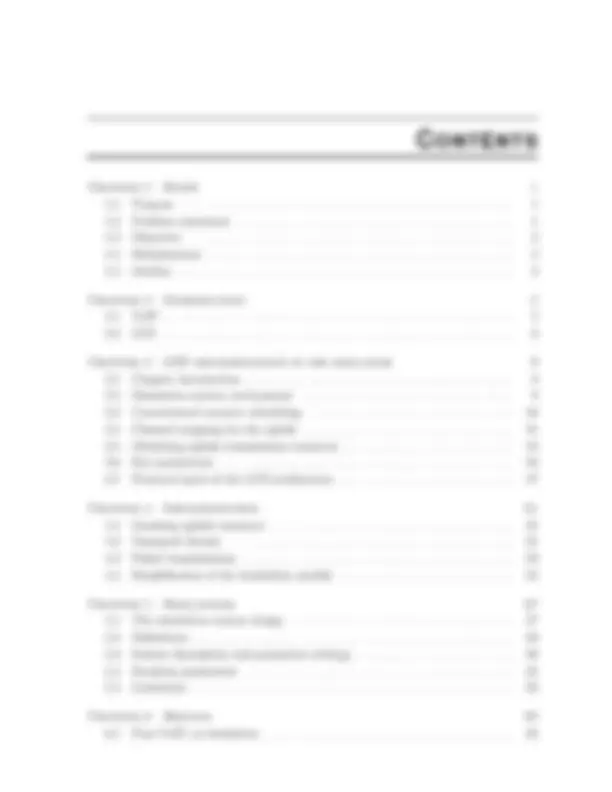
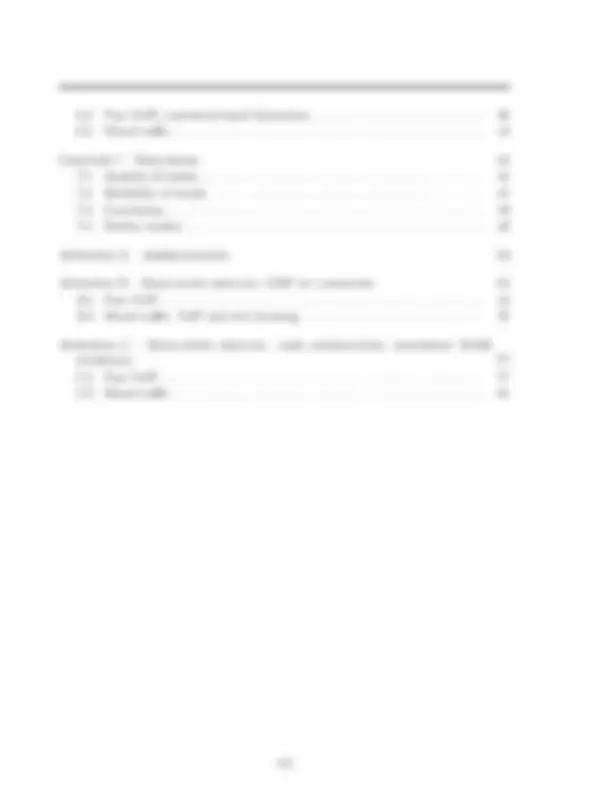
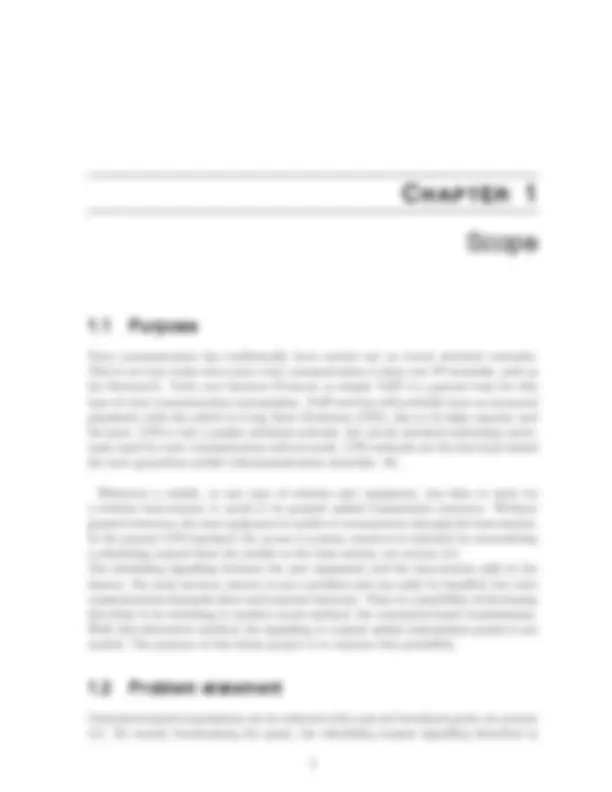

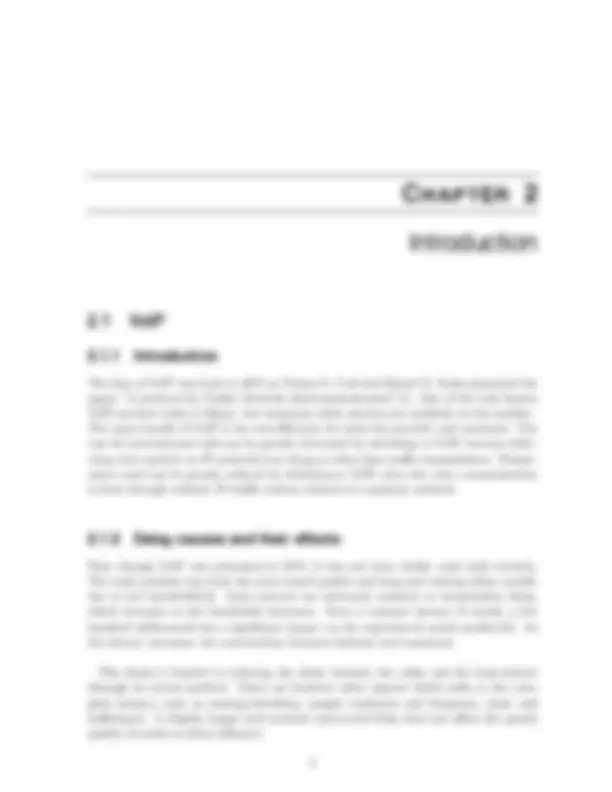
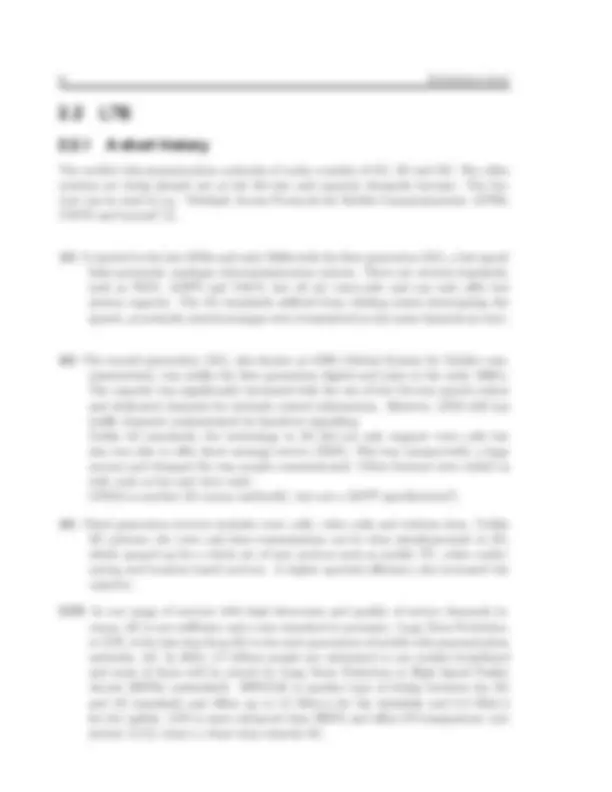
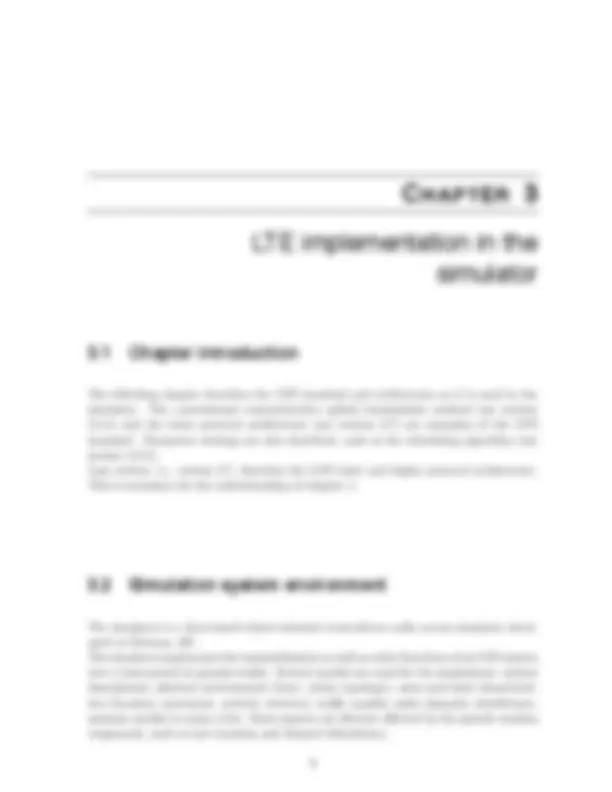
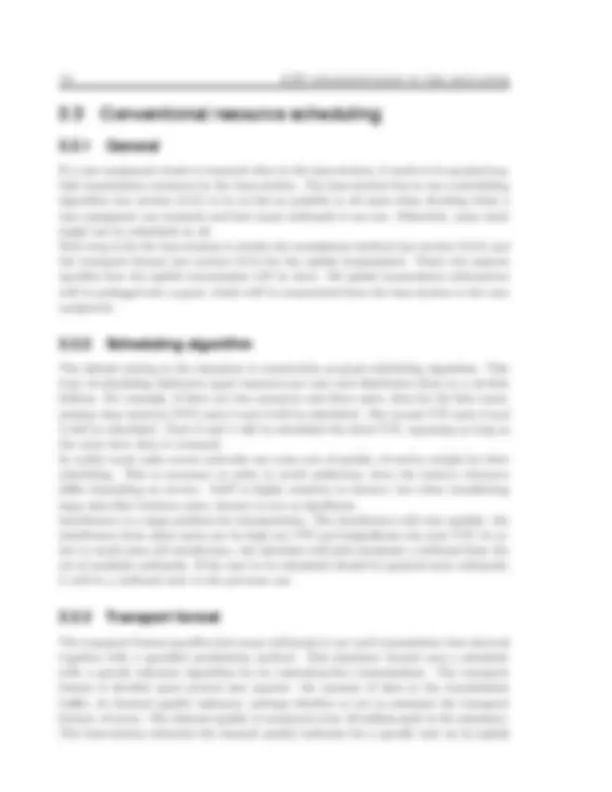
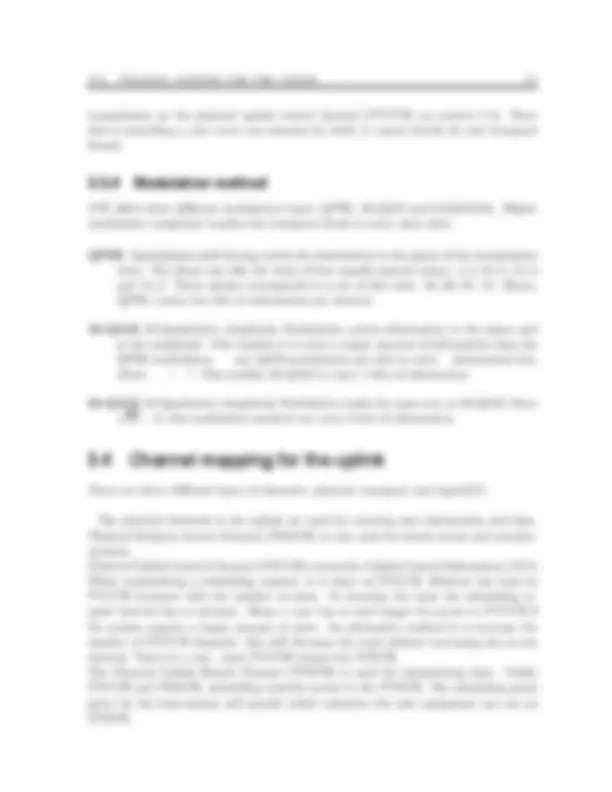
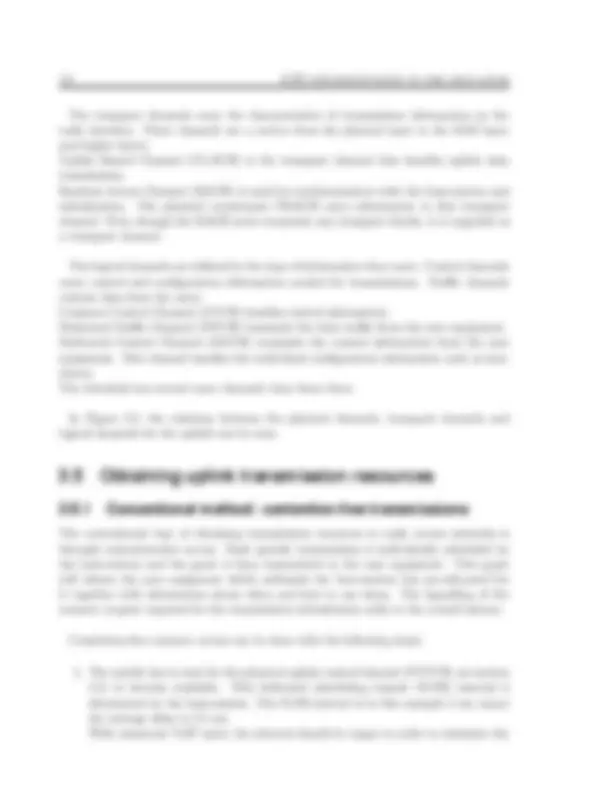
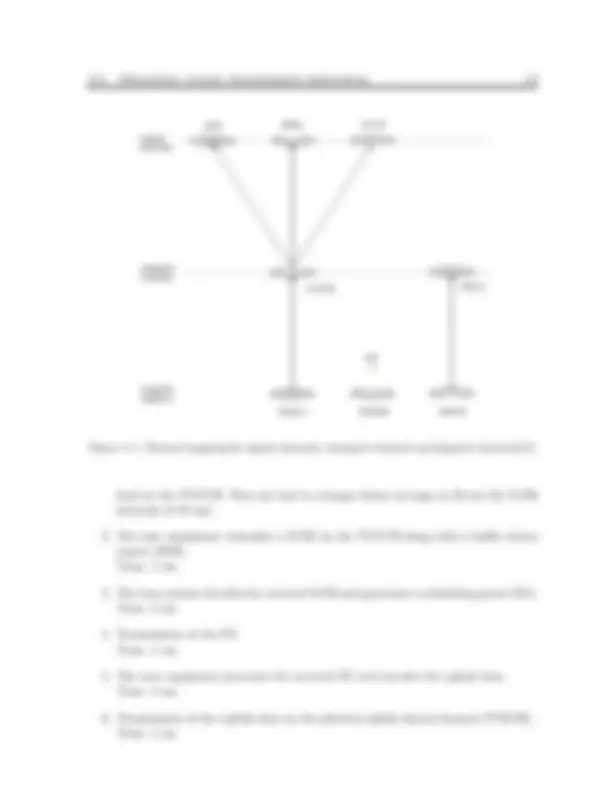
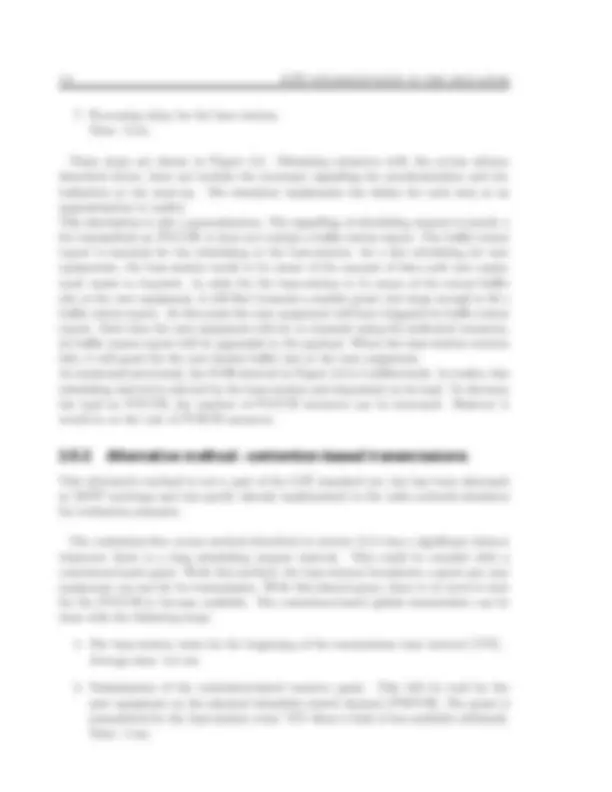
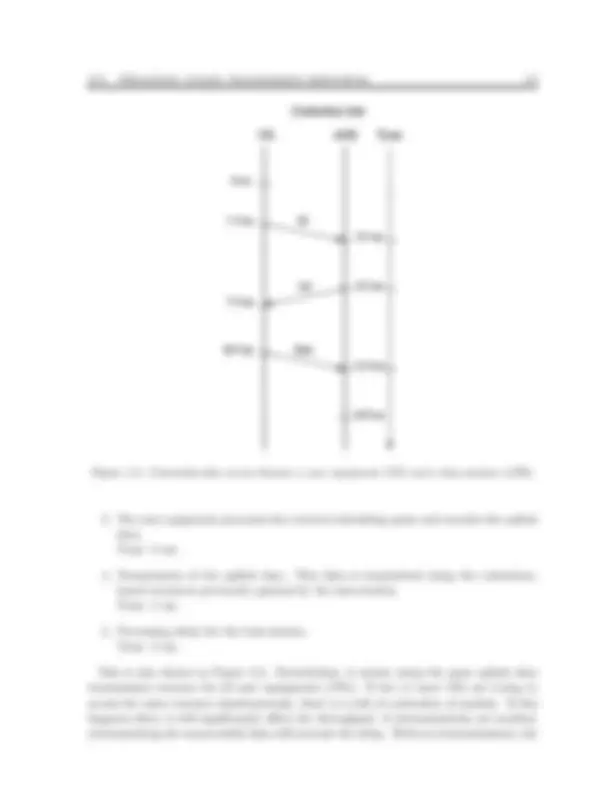
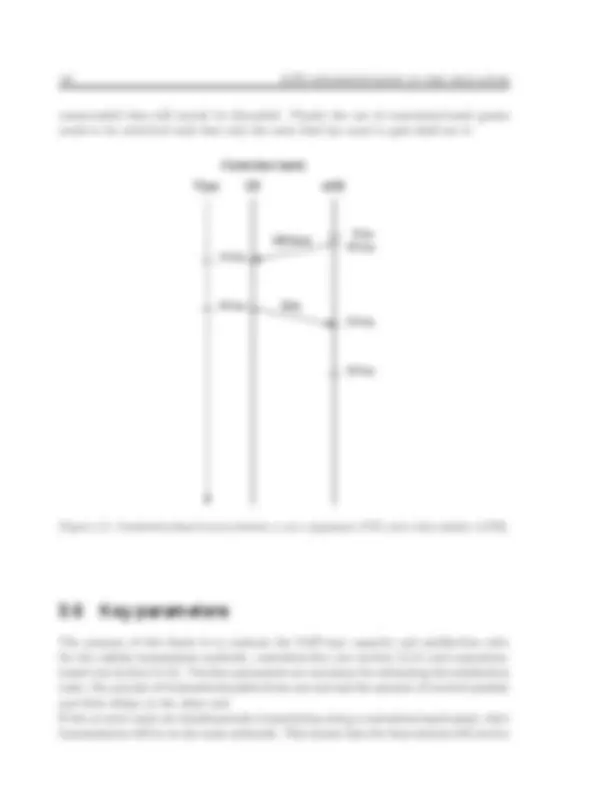
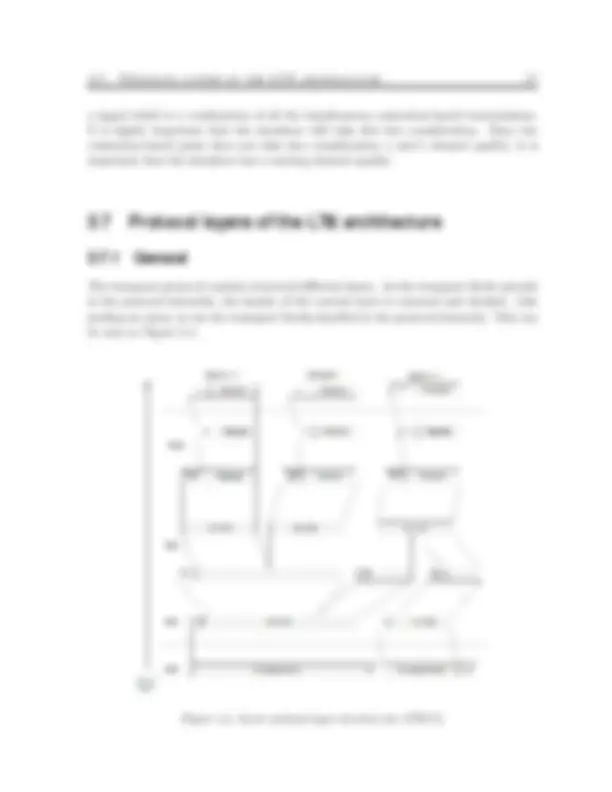

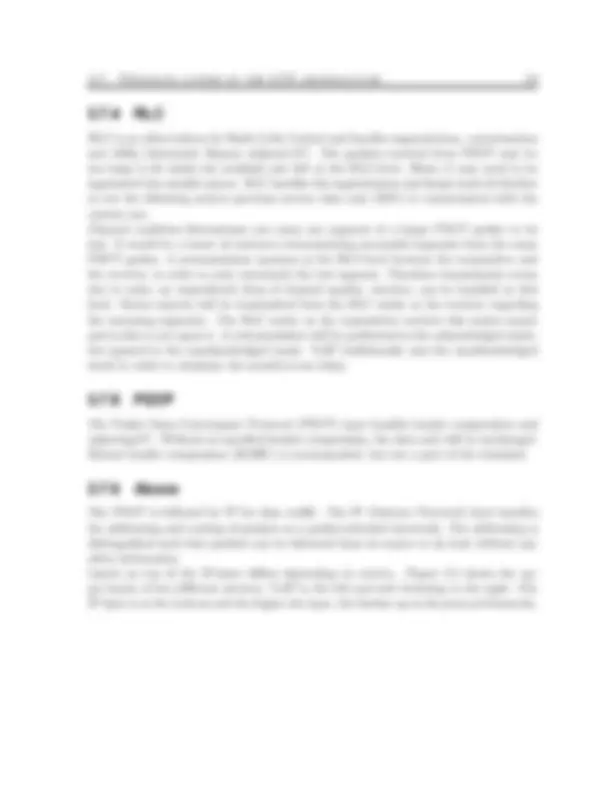
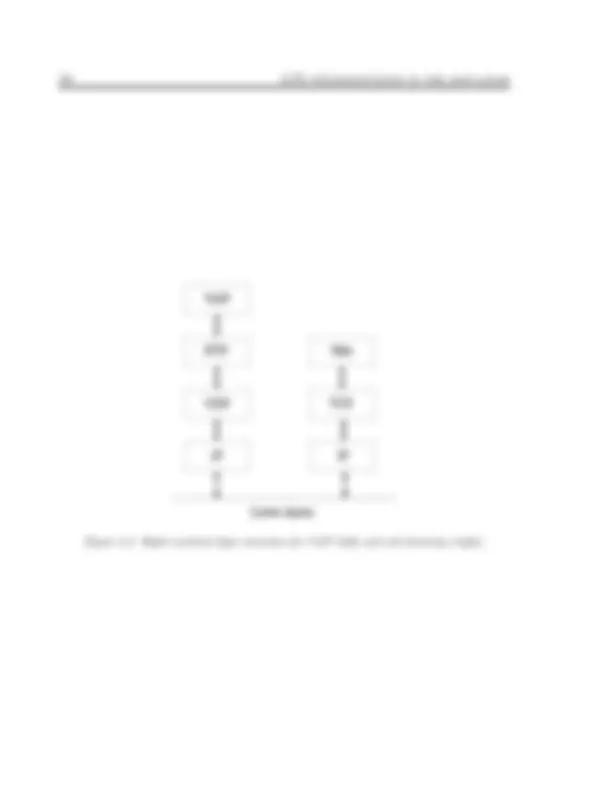
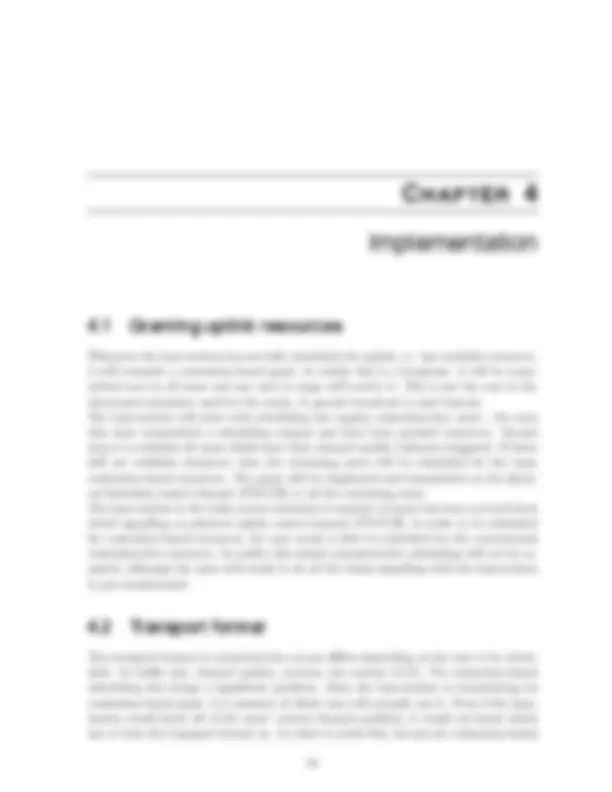
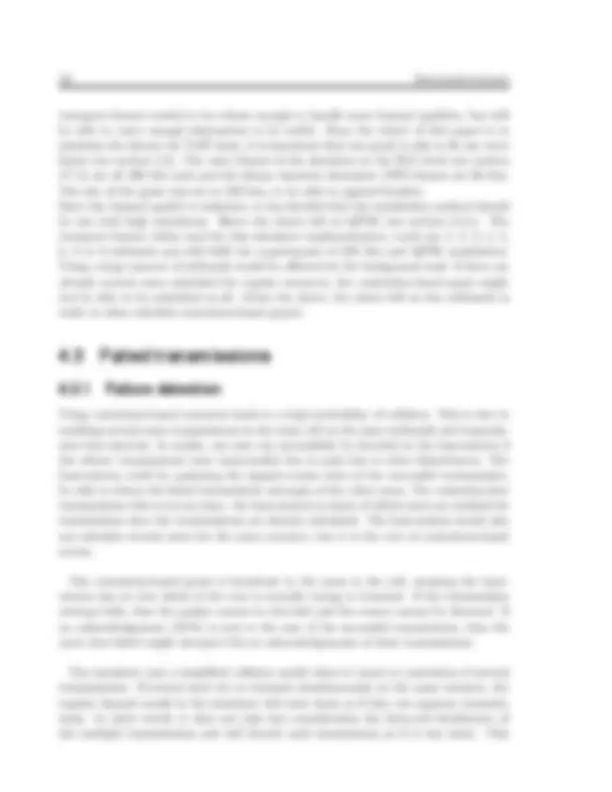
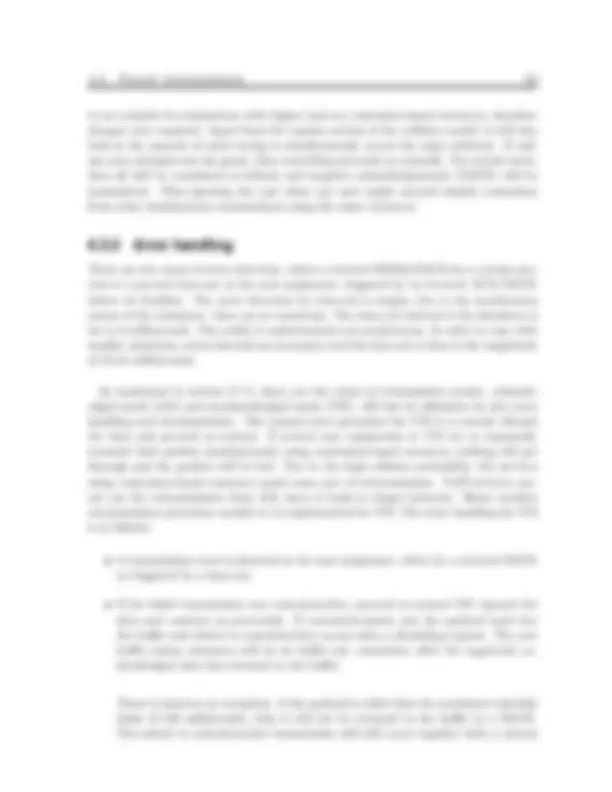
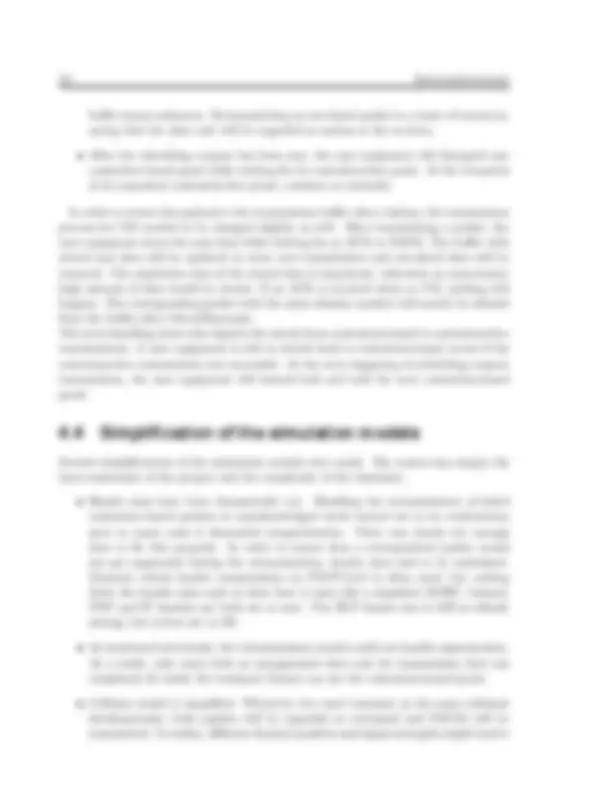


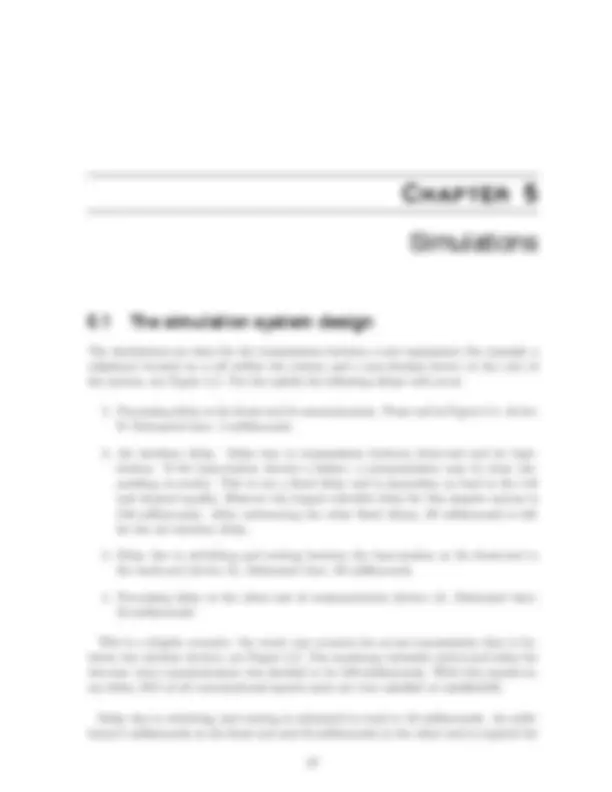
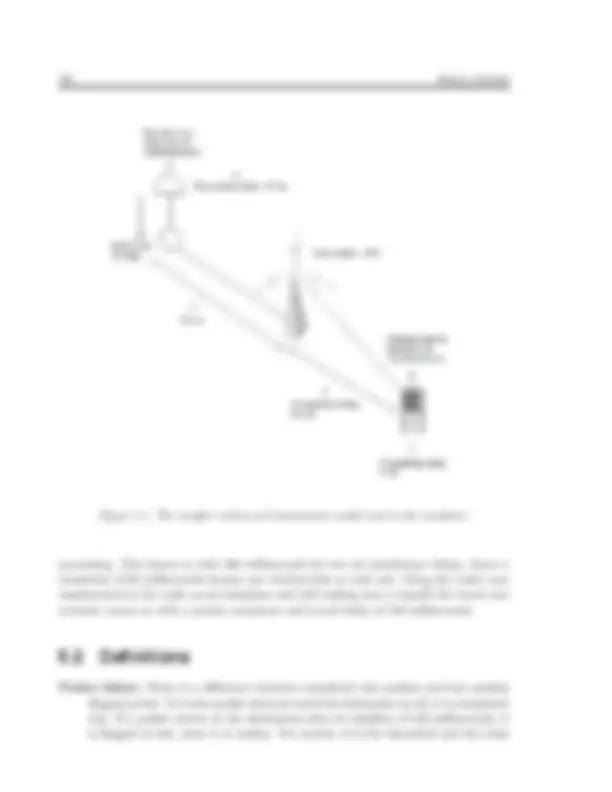
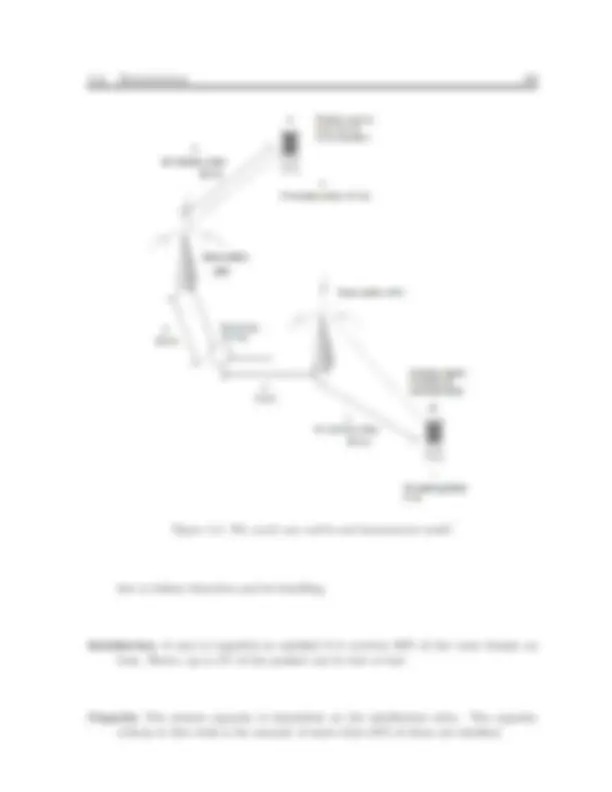
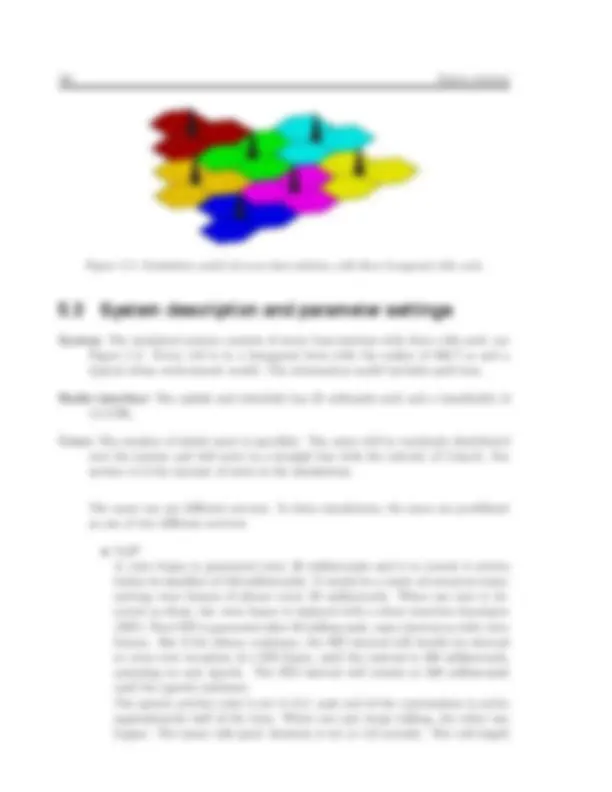
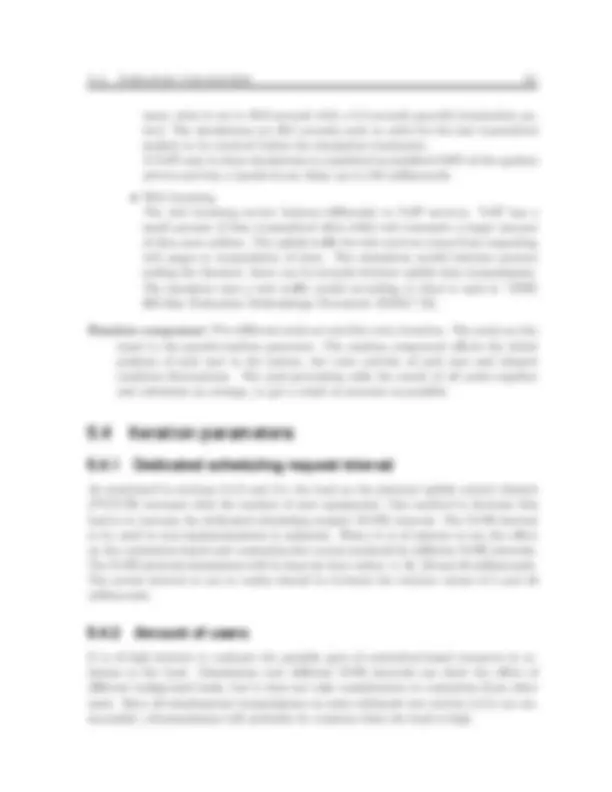
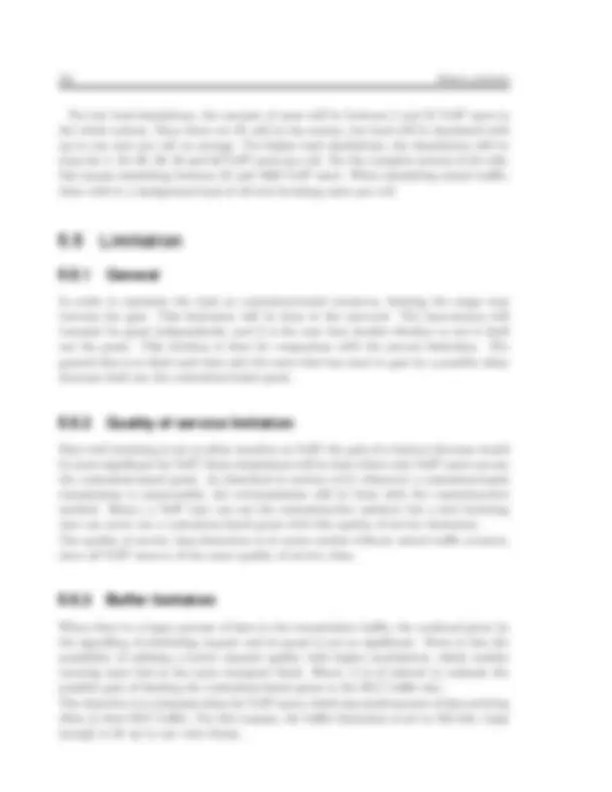
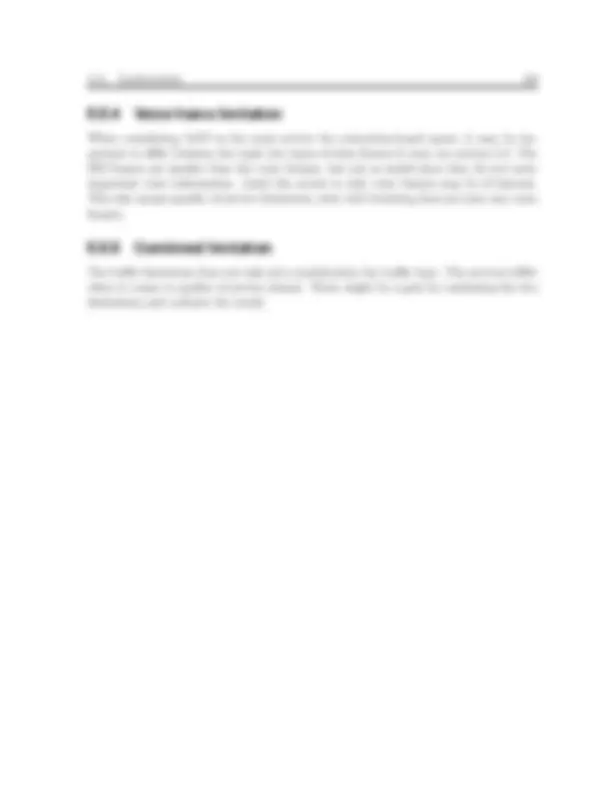

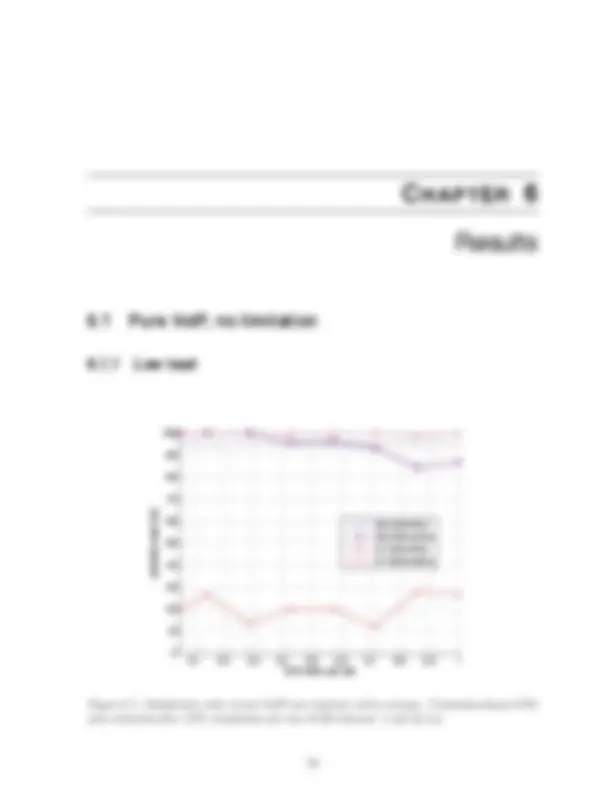

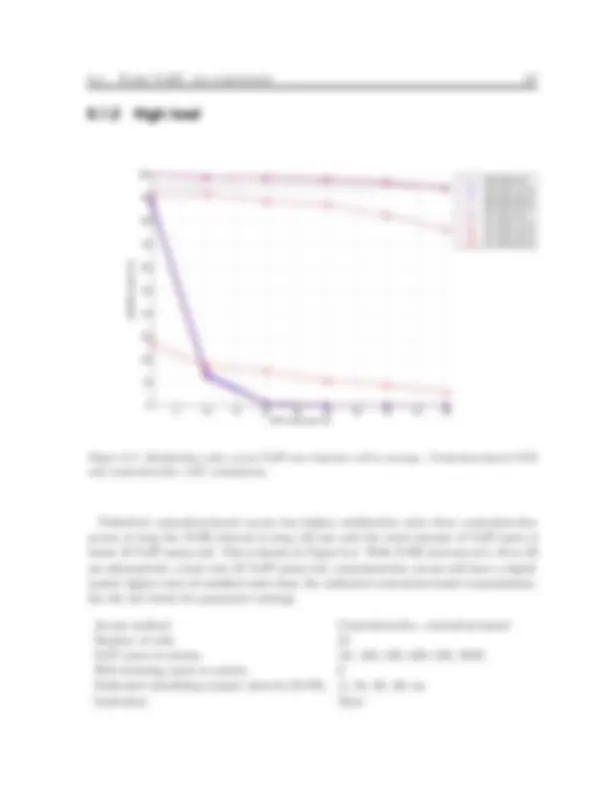
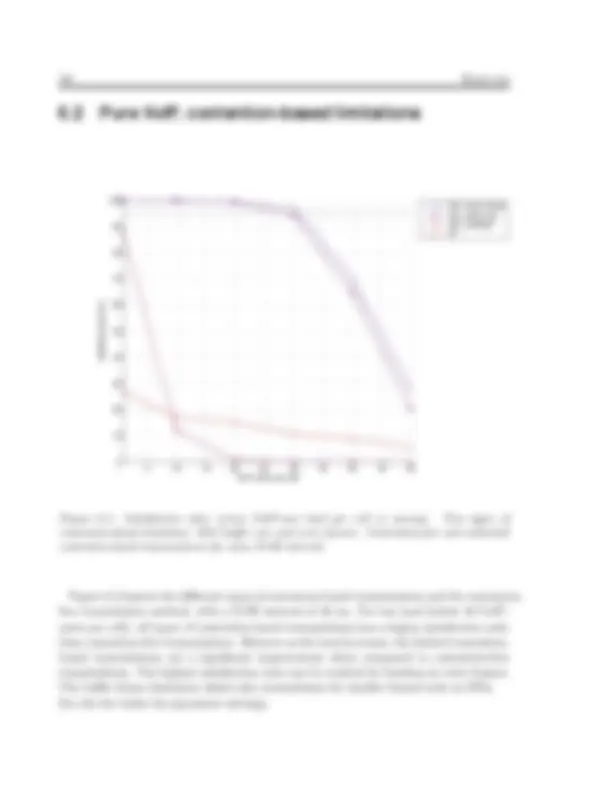

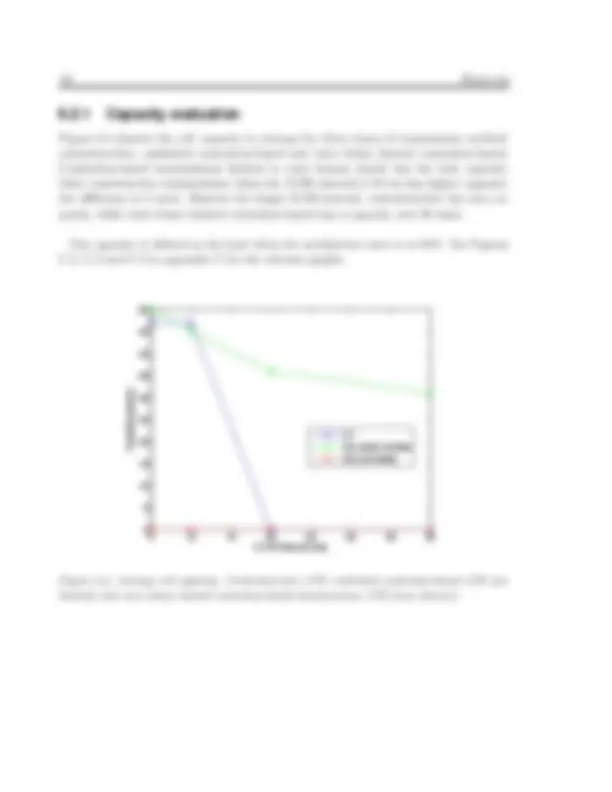
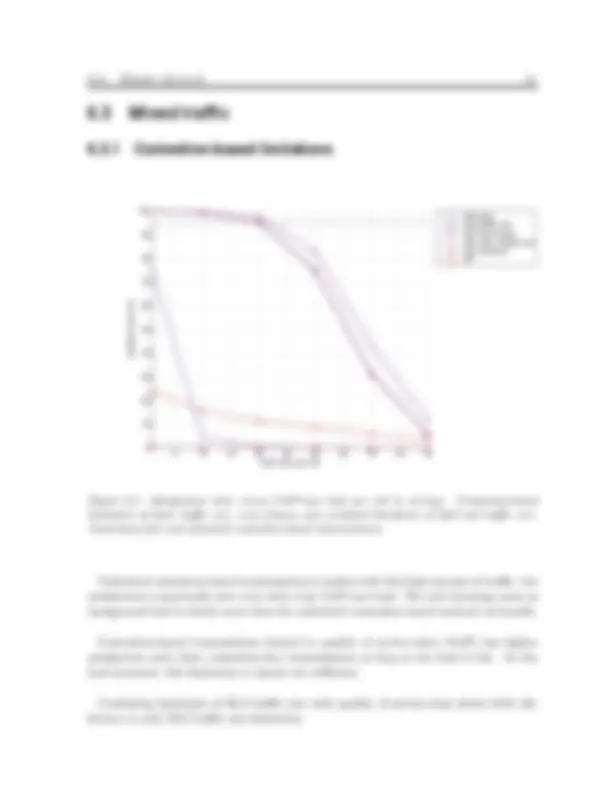
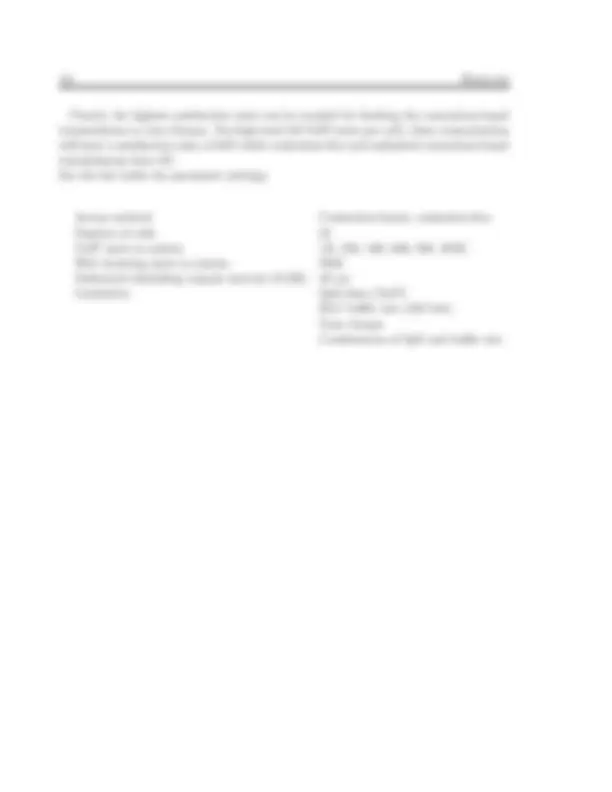
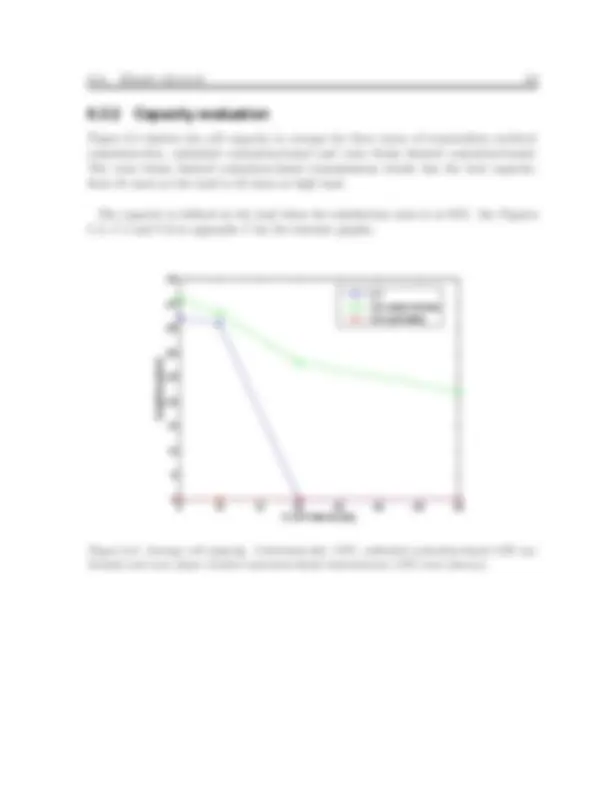

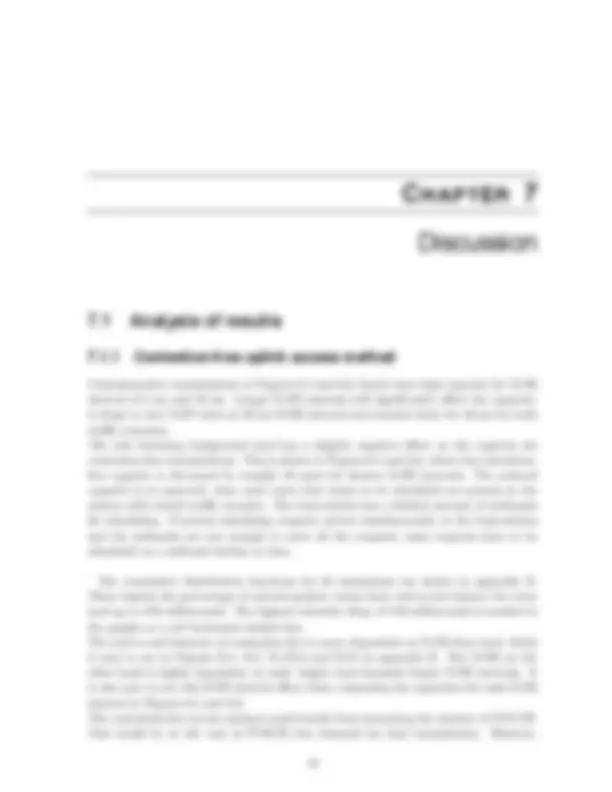
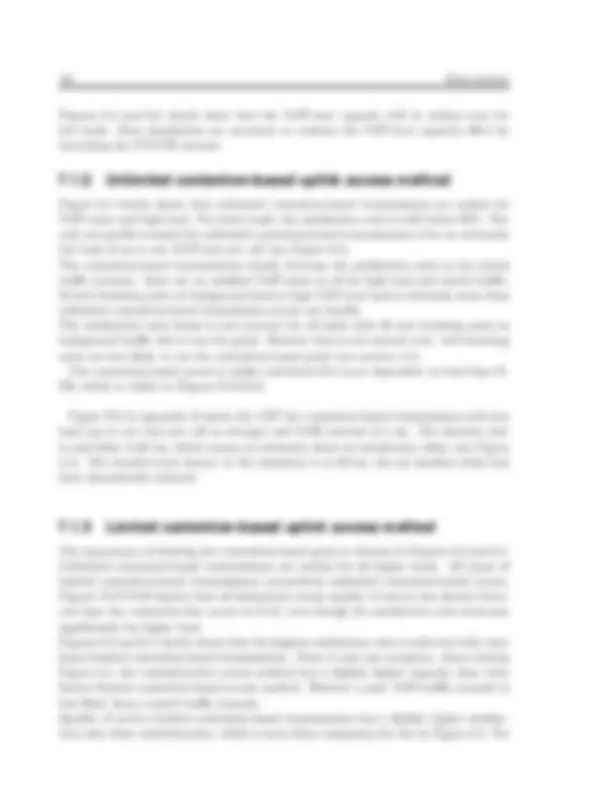
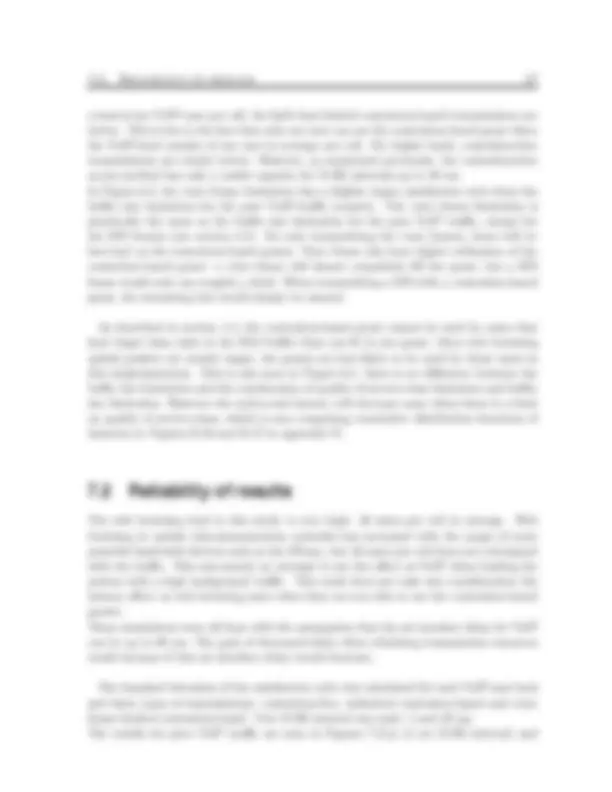


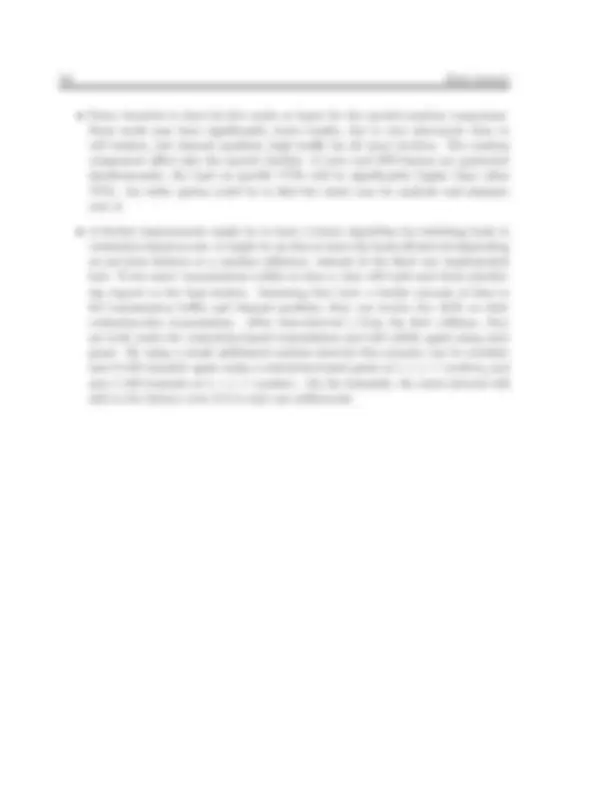
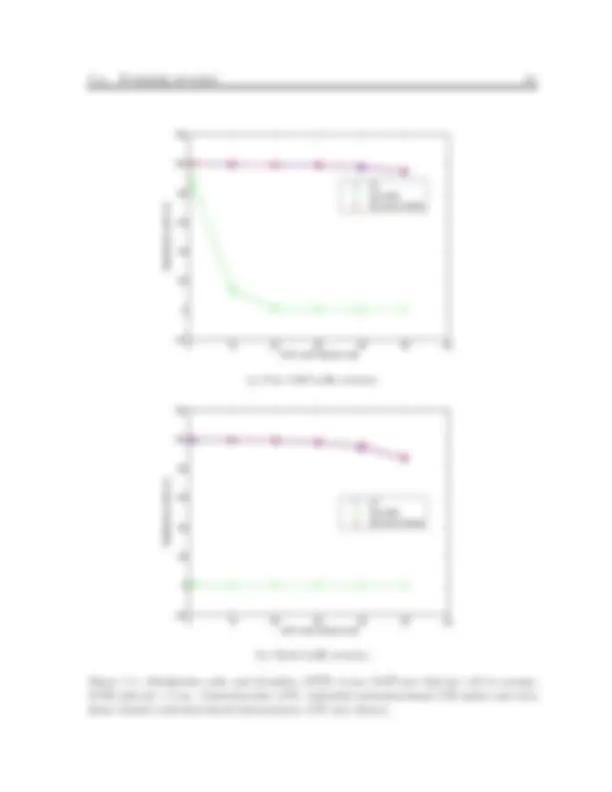
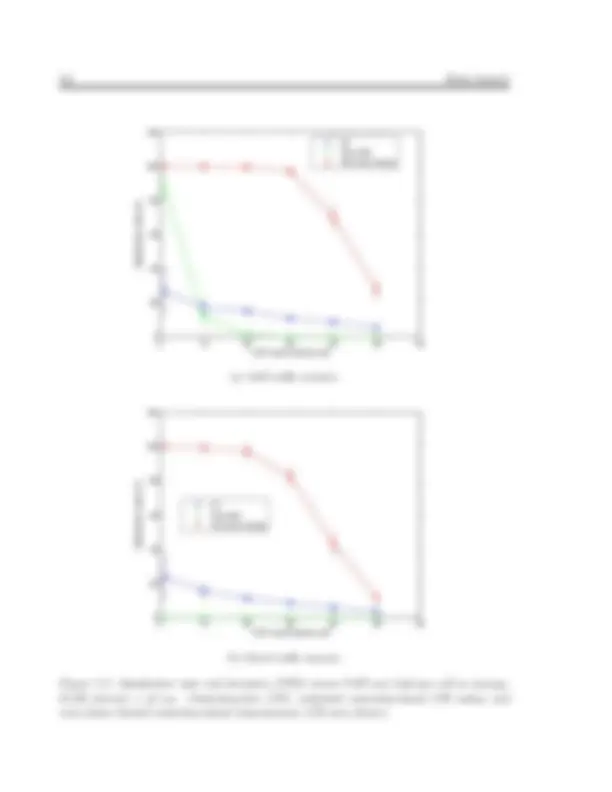
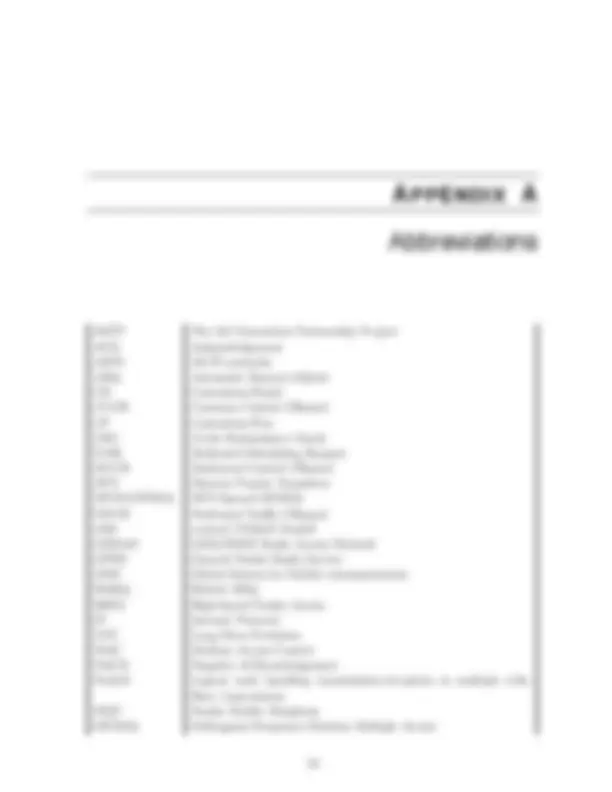

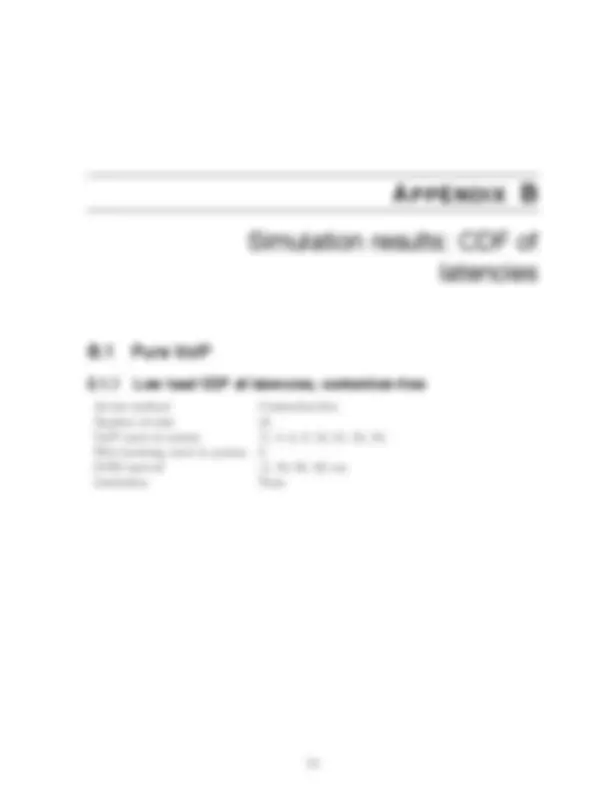
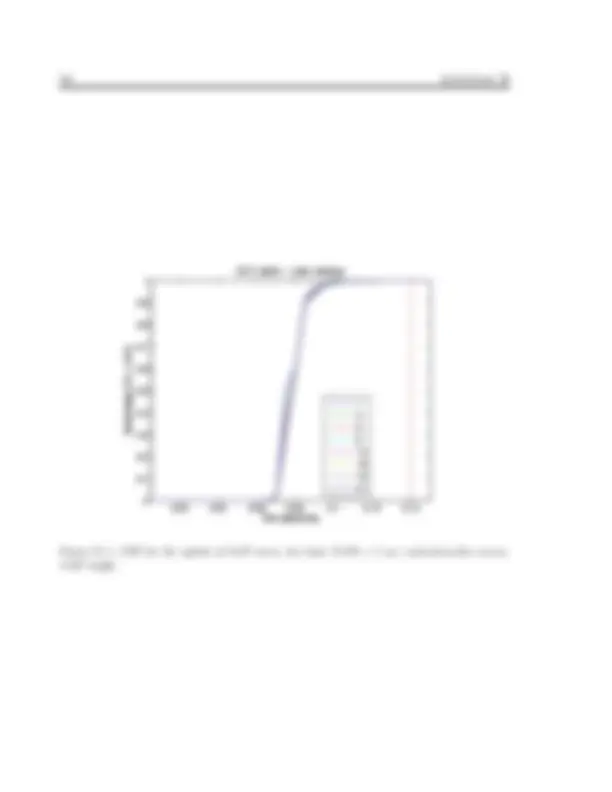
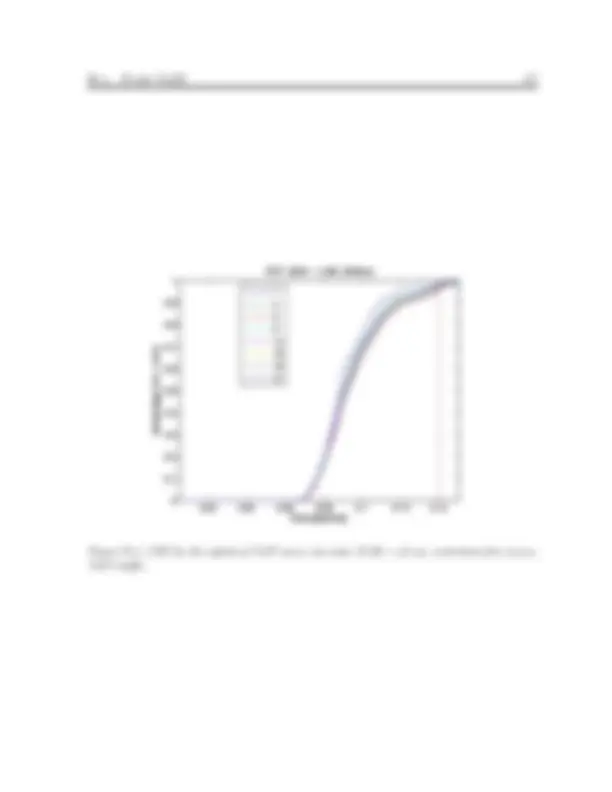

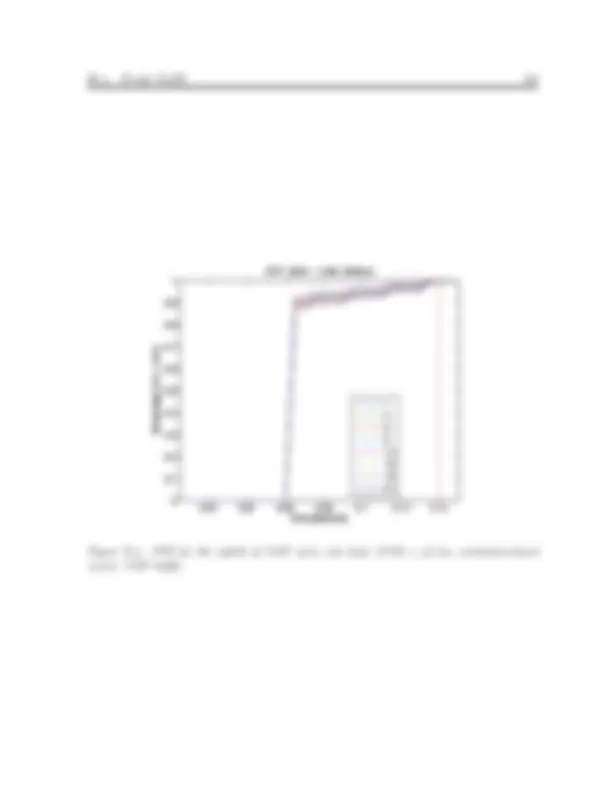
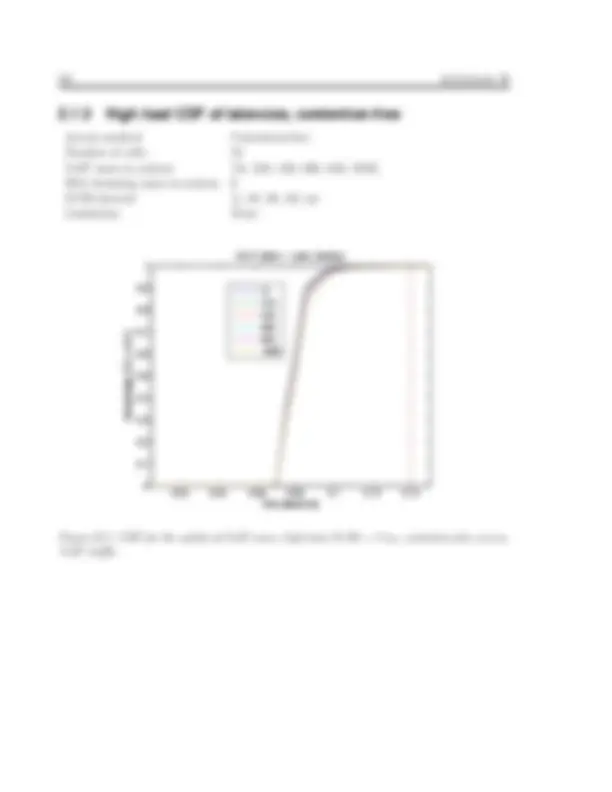
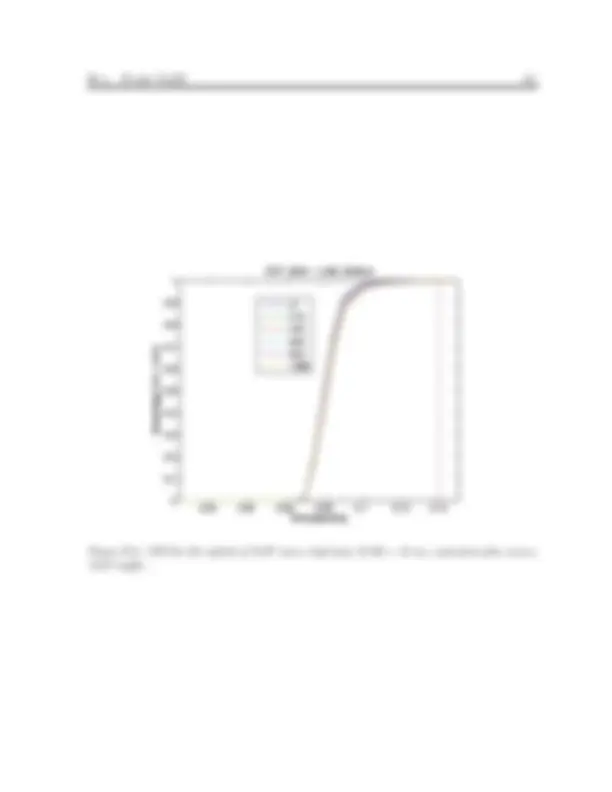
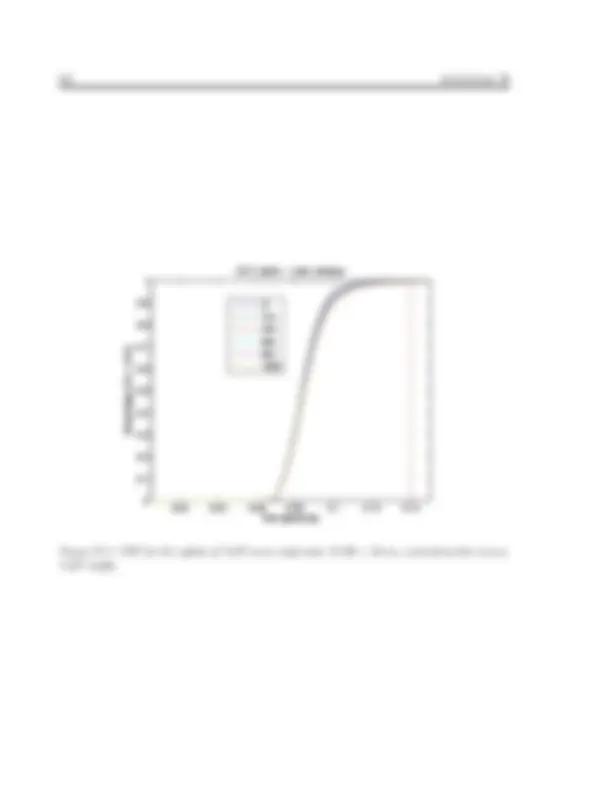
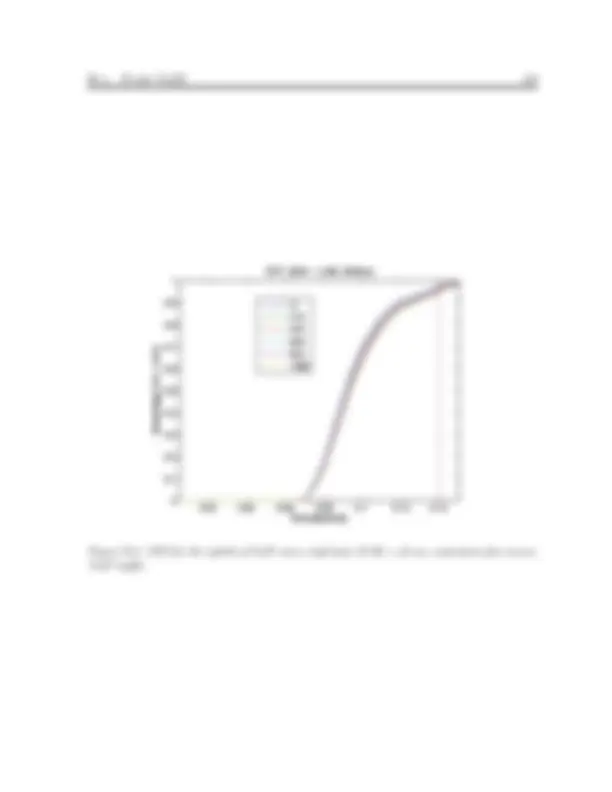
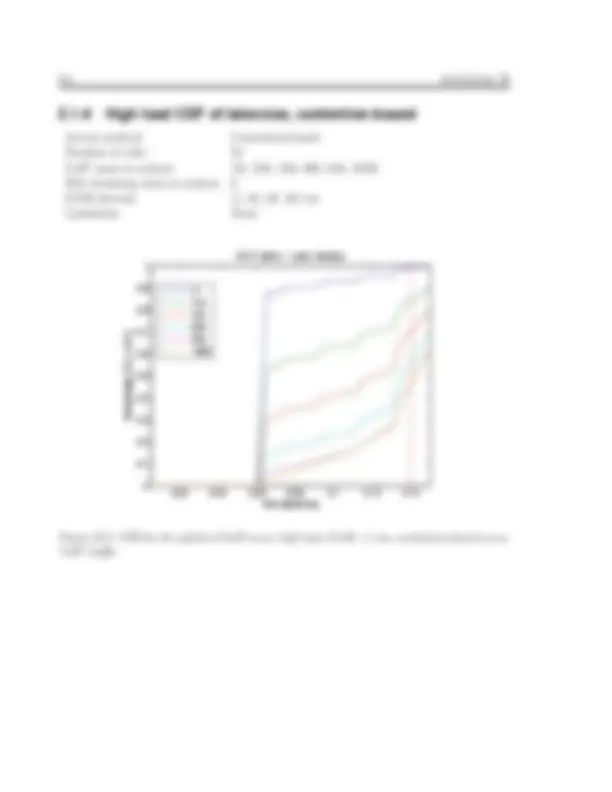
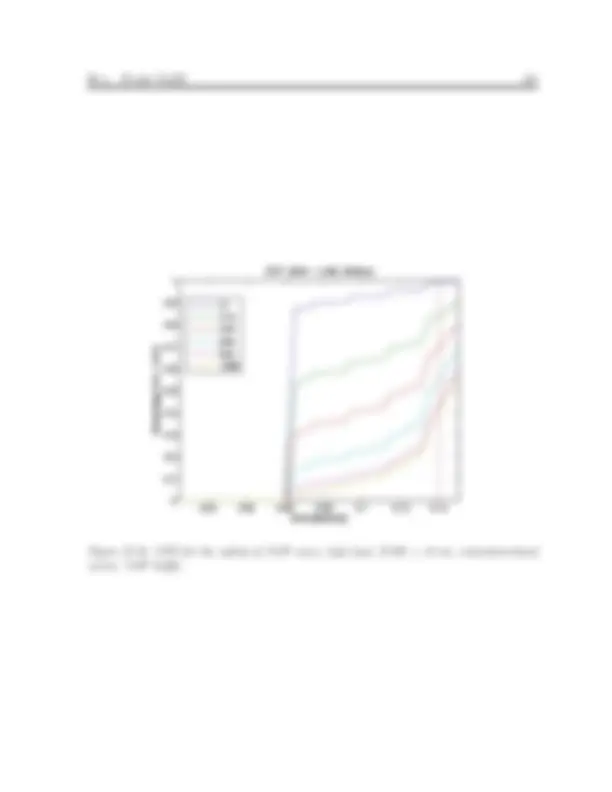
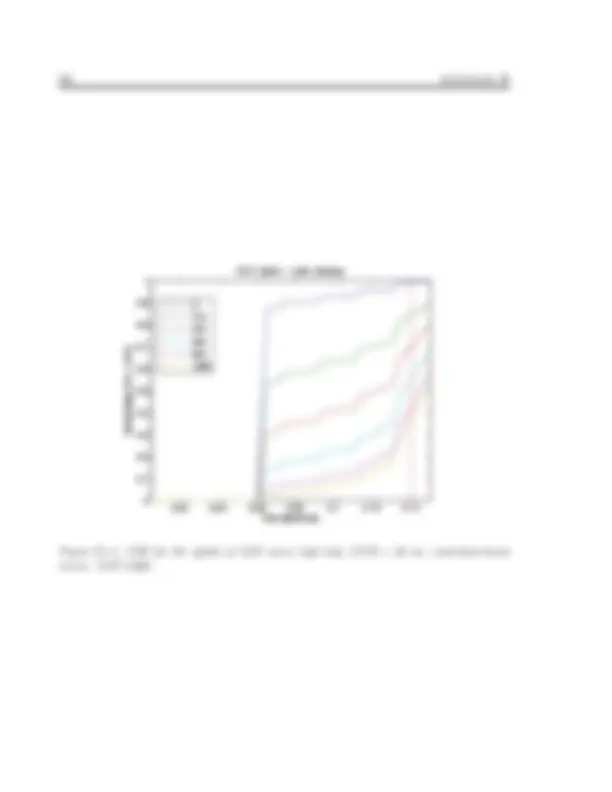
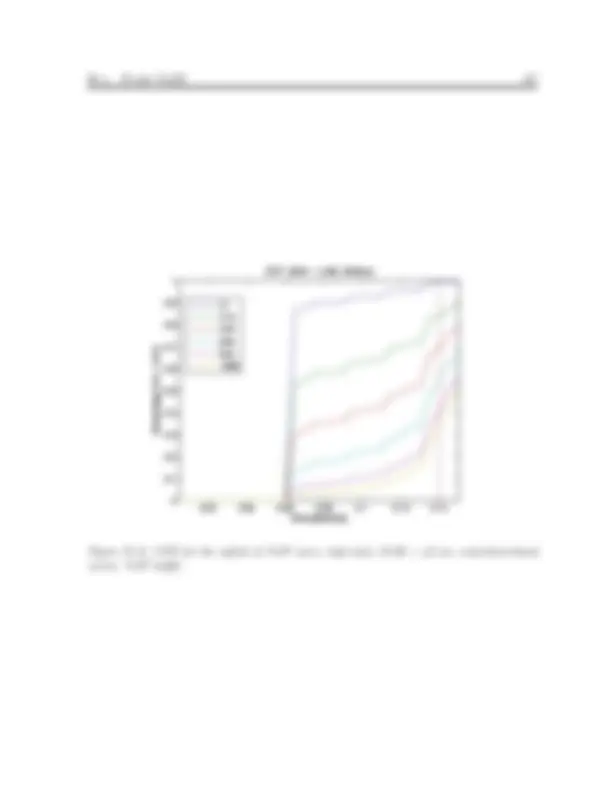
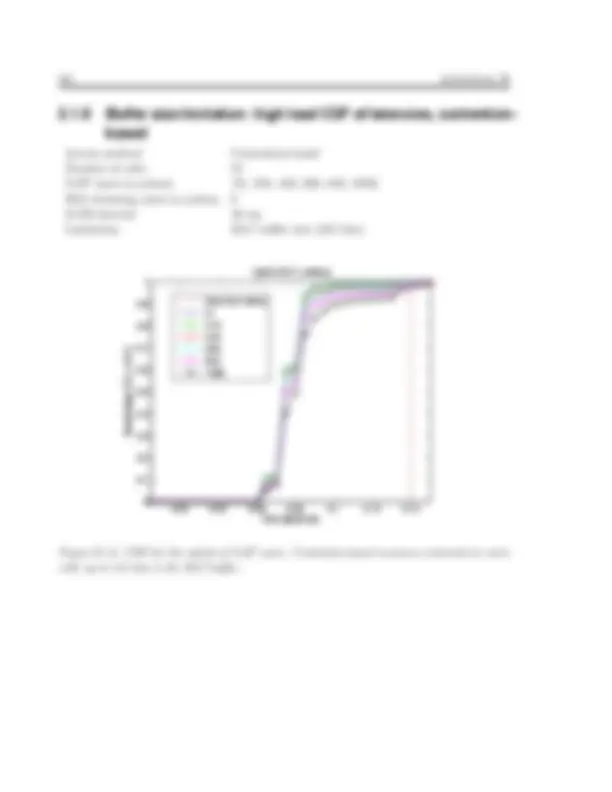
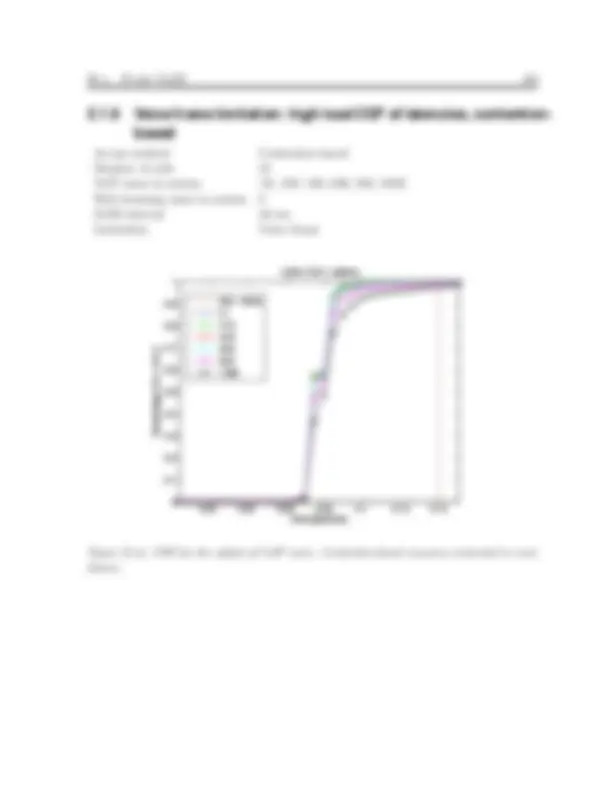
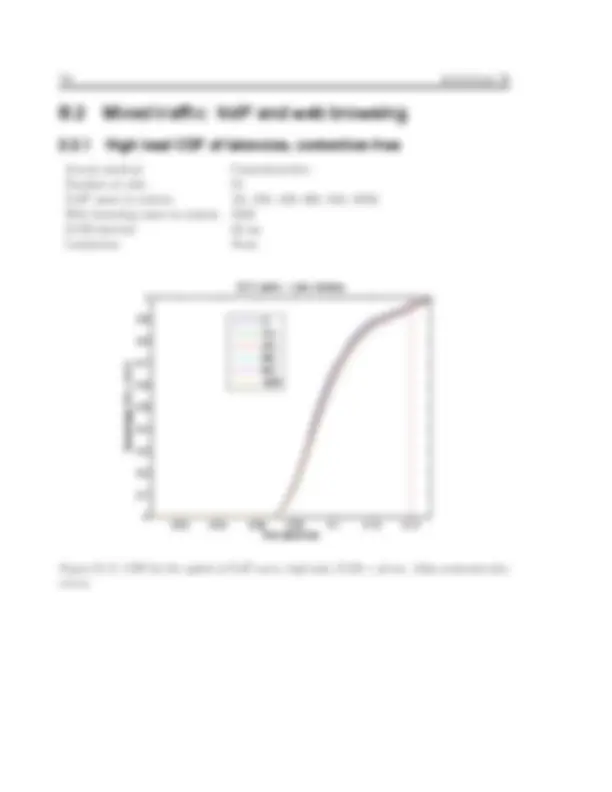
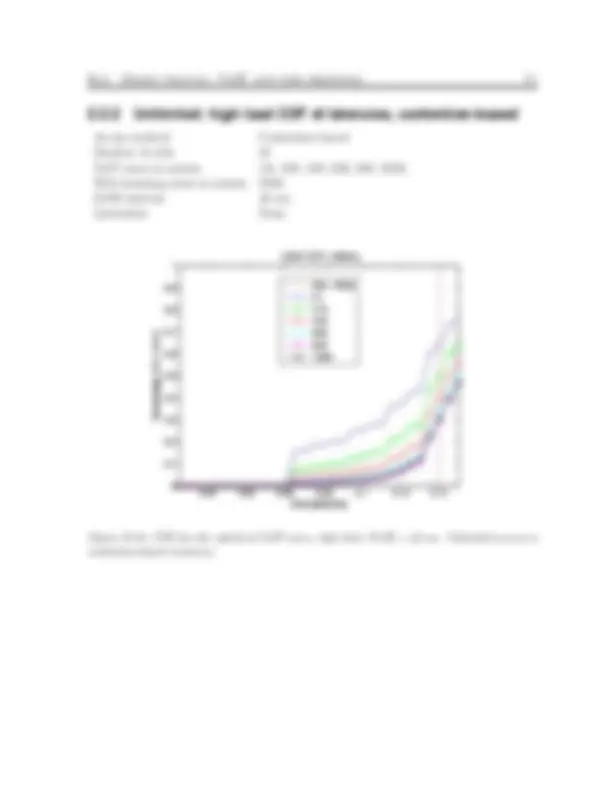
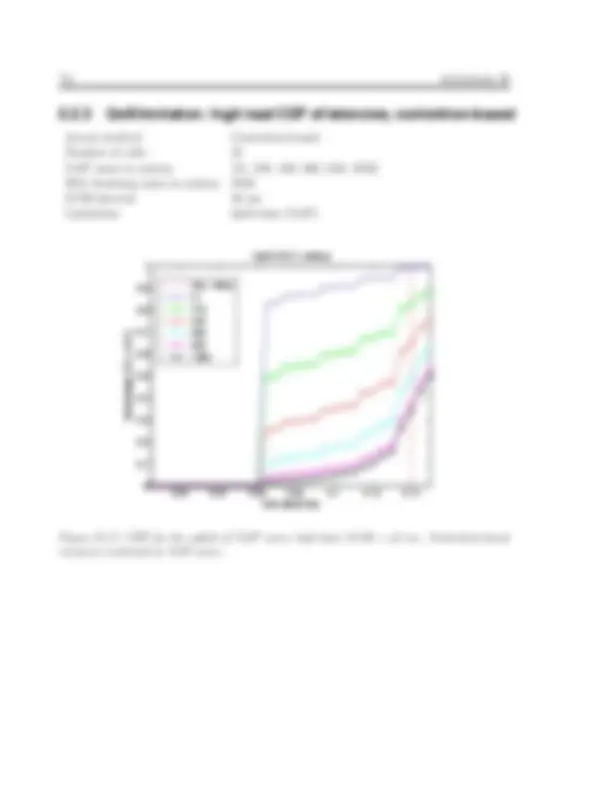
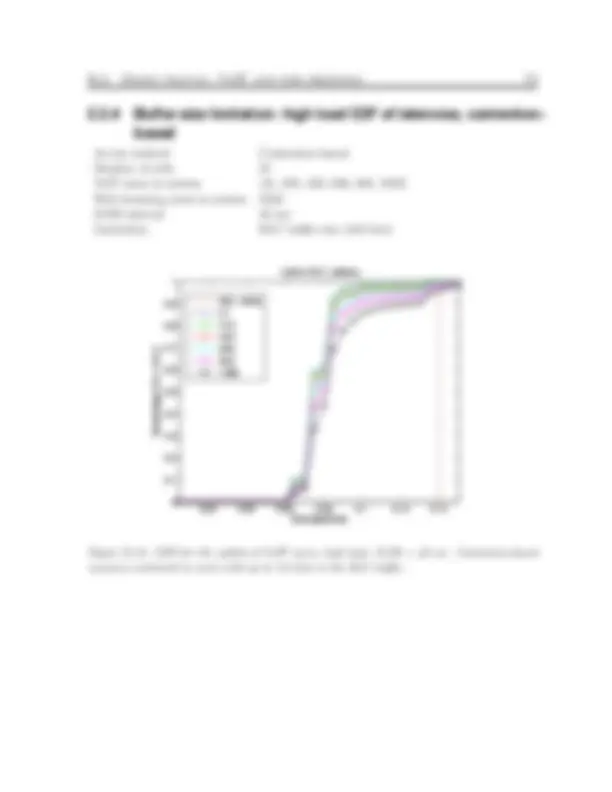
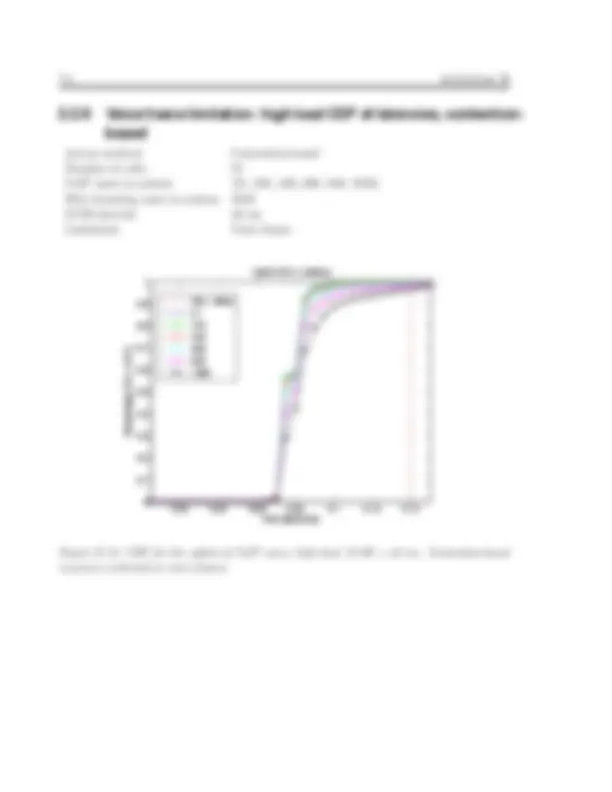
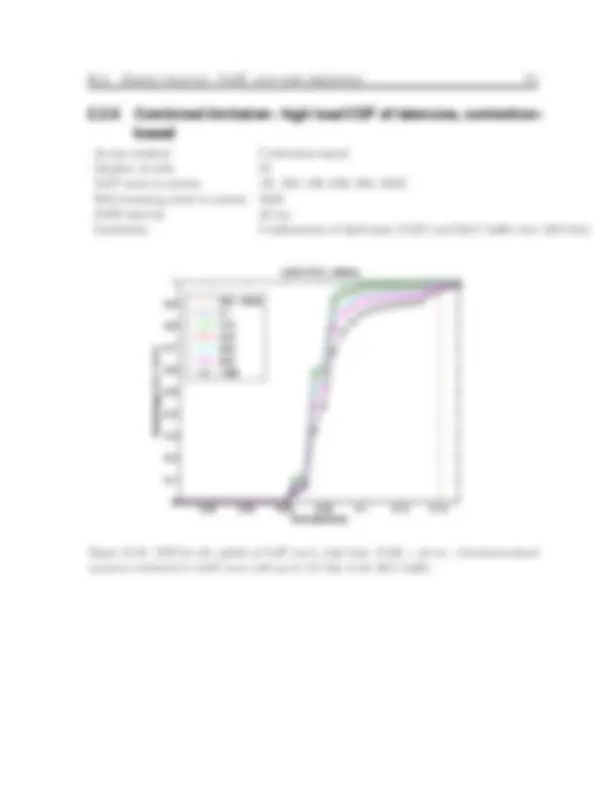

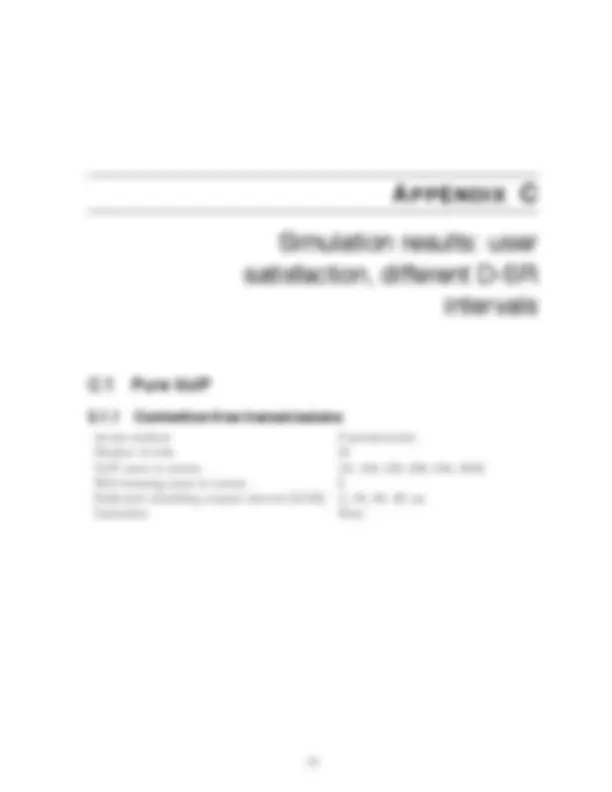
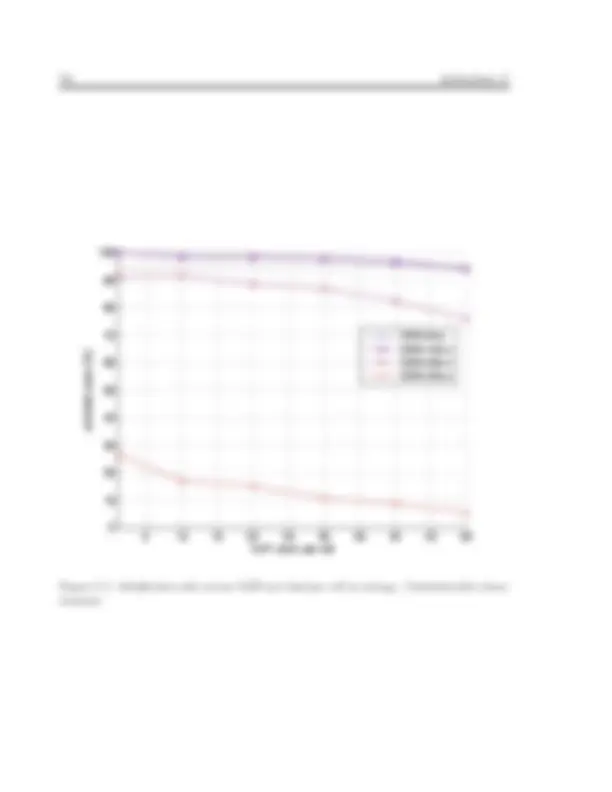
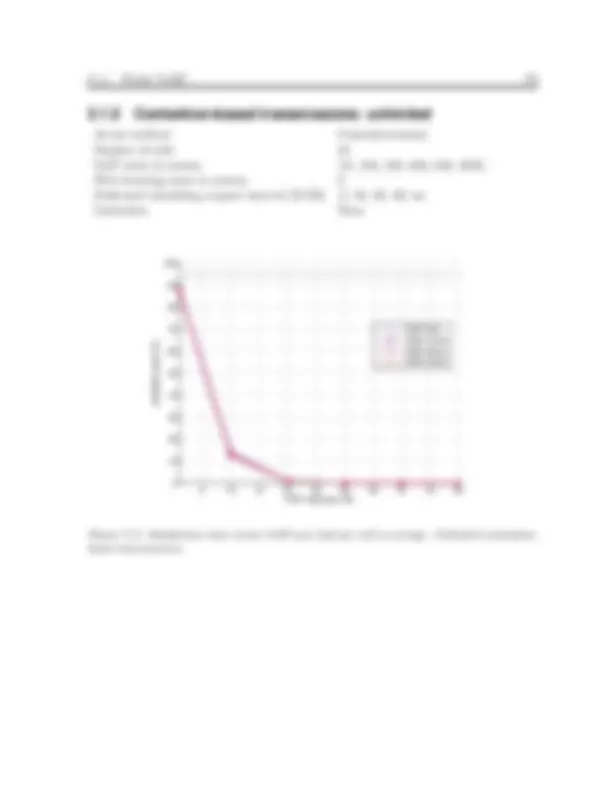
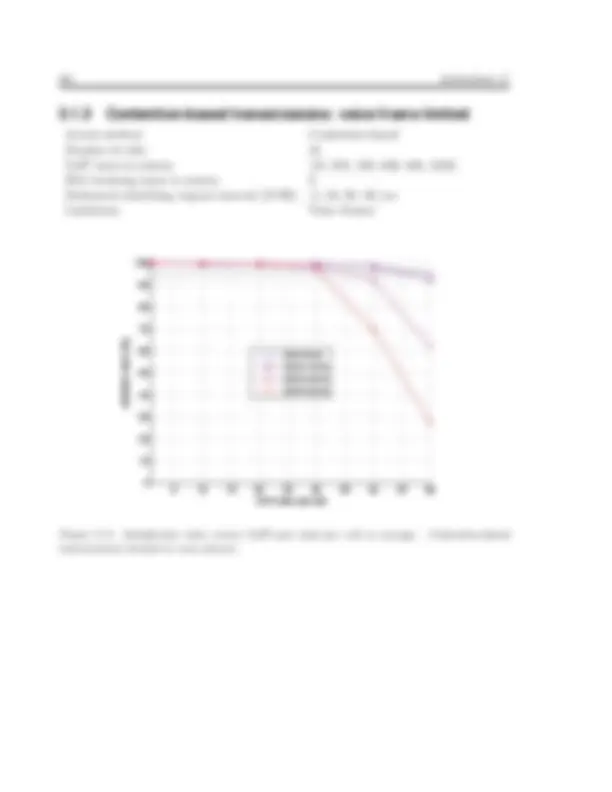

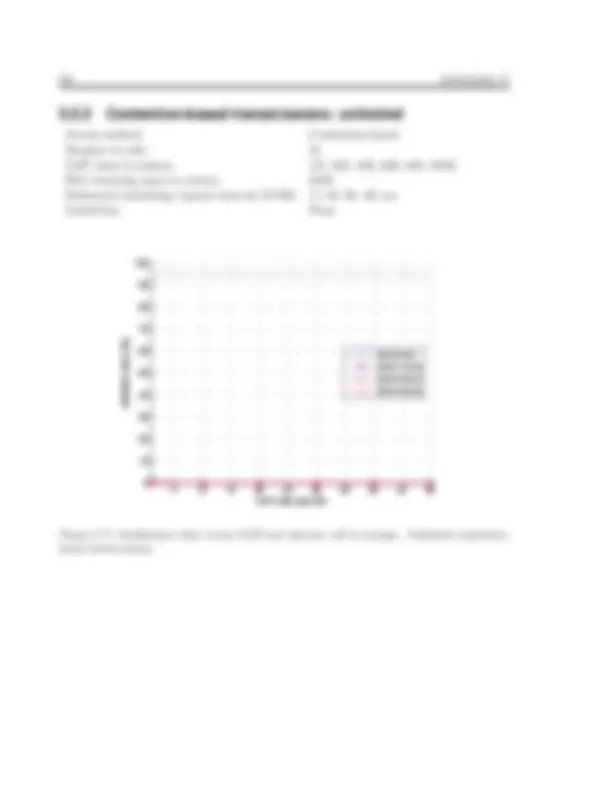
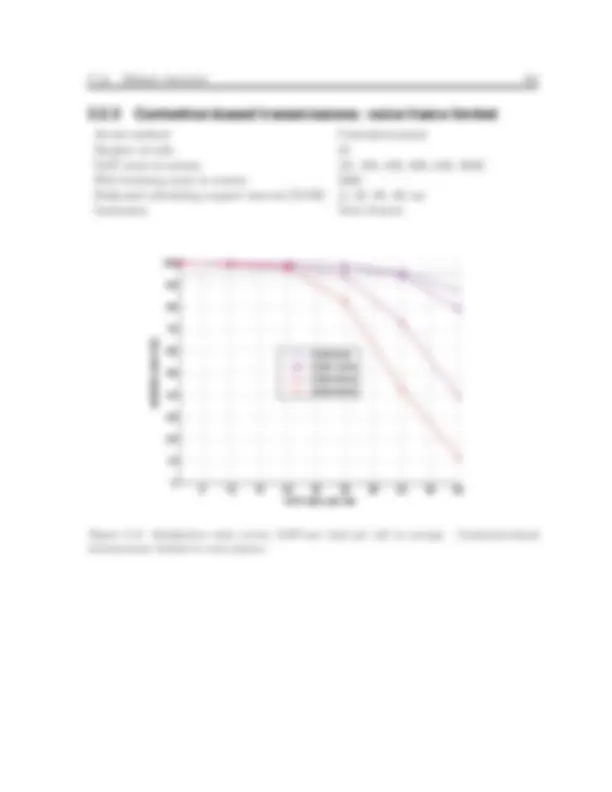





Study with the several resources on Docsity

Earn points by helping other students or get them with a premium plan


Prepare for your exams
Study with the several resources on Docsity

Earn points to download
Earn points by helping other students or get them with a premium plan
Community
Ask the community for help and clear up your study doubts
Discover the best universities in your country according to Docsity users
Free resources
Download our free guides on studying techniques, anxiety management strategies, and thesis advice from Docsity tutors
This document compares contention-free access and contention-based access for Voice over Internet Protocol (VoIP) users in cellular networks. The study includes simulations and evaluations of VoIP user satisfaction, cell capacity, and latency for different D-SR intervals, load, and transmission methods. The results show that contention-based transmissions limited to voice frames have the best capacity and that unlimited contention-based transmissions are useless for VoIP users and high load.
Typology: Lecture notes
1 / 95

This page cannot be seen from the preview
Don't miss anything!
























































































2010:009 CIV
Luleå University of Technology MSc Programmes in Engineering Computer Science and Engineering Department of Computer Science and Electrical Engineering Division of Computer Communication
2010:009 CIV - ISSN: 1402-1617 - ISRN: LTU-EX--10/009--SE
Voice communication has traditionally been carried out on circuit switched networks only. This is not true today since some voice communication is done over IP-networks, such as the Internet. A general term for this type of voice communication transmission is Voice over Internet Protocol, or simply VoIP. The main benefit of VoIP is its cost-efficiency concerning both system maintenance and international calls. VoIP-services will probably have an increased popularity with the switch to Long Term Evolution (LTE), due to its high capacity and bit-rates. Voice communication is highly sensitive to end-to-end delay. Obtaining transmission re- sources in LTE using the conventional contention-free transmission method contributes to the end-to-end latency. This is due to the scheduling signalling which can only be done in specified intervals on a scheduling channel, so called D-SR intervals. The D-SR interval can be long if the load is high.
This work investigates the possible capacity gain for VoIP-users by using an alternative contention-based transmission method. This method uses a pre-set broadcast grant to be used by any user. However, as the load increases, the contention from several users will become more common since the grant is shared by everyone. Hence, restrictions to the alternative transmission method in order to decrease the load are also analysed.
Two different grant methods are evaluated: the conventional contention-free and the contention-based. A system simulator is used to investigate the two grant methods. The simulator models a complete LTE system in a multi-cell environment. The simulations show it is necessary to limit the contention-based access to only VoIP packets of a cer- tain size. Unlimited use of contention-based access is clearly shown to be useless: the capacity is zero VoIP-users per cell. Further on, when comparing contention-free access to contention-based limited to VoIP packets for different D-SR intervals, it is found that the two methods have similar VoIP-user capacities for D-SR interval of 10 ms and lower. VoIP packet limited contention-based transmissions have a significantly higher VoIP-user capacity for D-SR intervals over 10 ms.
iii
1.1 Purpose
Voice communication has traditionally been carried out on circuit switched networks. This is not true today since some voice communication is done over IP-networks, such as the Internet[1]. Voice over Internet Protocol, or simply VoIP, is a general term for this type of voice communication transmission. VoIP-services will probably have an increased popularity with the switch to Long Term Evolution (LTE), due to its high capacity and bit-rates. LTE is only a packet switched network: the circuit switched technology previ- ously used for voice communication will not work. LTE networks are the last step toward the next generation mobile telecommunication networks: 4G.
Whenever a mobile, or any type of wireless user equipment, has data to send via a wireless base-station, it needs to be granted uplink transmission resources. Without granted resources, the user equipment is unable to communicate through the base-station. In the present LTE standard, the access to system resources is initiated by transmitting a scheduling request from the mobile to the base station, see section 3.2. The scheduling signalling between the user equipment and the base-station adds to the latency. For most services, latency is not a problem and can easily be handled, but voice communication demands short and constant latencies. There is a possibility of decreasing this delay is by switching to another access method: the contention-based transmissions. With this alternative method, the signalling to request uplink transmission grants is not needed. The purpose of this thesis project is to examine this possibility.
1.2 Problem statement
Contention-based transmission can be achieved with a pre-set broadcast grant, see section 3.3. By merely broadcasting the grant, the scheduling request signalling described in
1
2 Scope
section 3.2 becomes unnecessary. For small loads this may work well, but the collision probability increases with the load. This is due to the risk of several users transmitting simultaneously using the pre-set broadcast grant, which increases with the load. The idea is to examine different use of contention-based grants and find under which properties and restrictions the average satisfaction ratio and capacity for VoIP-users will be maximised. This will also be compared to the conventional contention-free access method.
1.3 Objective
Higher satisfaction ratio and capacity for VoIP-users requires decreasing the uplink trans- mission resource access delay. Since contention-based grants have a high contention probability for high load, suitable access limitation parameters will be evaluated. Four types of restrictions to the contention-based grants will be compared with contention-free transmissions. The comparison will also be done to contention-based grants available for all users. Evaluation will take consideration to the initial delay due to gaining access to the signalling channel. The evaluation is done using simulations of a radio access network. This Java-based simulator is developed at Ericsson AB.
1.4 Delimitations
2.1 VoIP
The idea of VoIP was born in 1974 as Vinton G. Cerf and Robert E. Kahn presented the paper ”A protocol for Packet Network Intercommunication”[2]. One of the best known VoIP-services today is Skype, but numerous other services are available on the market. The main benefit of VoIP is its cost-efficiency for both the provider and consumer. The cost for international calls can be greatly decreased by switching to VoIP, because deliv- ering voice packets on IP-network is as cheap as other data traffic transmissions. Mainte- nance costs can be greatly reduced by switching to VoIP, since the voice communication is done through existent IP-traffic system instead of a separate network.
Even though VoIP was presented in 1974, it has not been widely used until recently. The main problem has been the poor sound quality and long and varying delay, mostly due to low bandwidth[3]. Voice services are extremely sensitive to transmission delay, which increases as the bandwidth decreases. Even a constant latency of merely a few hundred milliseconds has a significant impact on the experienced sound quality[18]. As the latency increases, the conversation becomes hesitant and unnatural.
This thesis is limited to reducing the delay between the caller and the base-station through its access method. There are however other aspects which adds to the com- plete latency, such as routing/switching, sample resolution and frequency, jitter and buffering[4]. A slightly longer and constant end-to-end delay does not affect the speech quality as much as jitter influence.
5
Release 8 of the LTE standardisation has been presented and has been frozen since December 2008[9]. The current LTE equipments are based on this release. Further improvement of the standardisation is possible in future releases.
LTE release 8 feature[9]:
The idea of LTE is not merely to increase the bit-rate. The future usage of mobile telecommunication moves clearly towards All-IP Networks, AIPN[12], as the trend of IP traffic usage in mobile systems increases. Mobile data traffic is estimated to double every year through 2013 and increase 66 times from 2008 to 2013[11]. AIPN offers gains such as decreased cost for the operators, flexibility of deployment and improved user experience[13]. With the use of IP transparency that AIPN brings, the access can also be done with WiFi, WiMAX or regular wired systems. Hence, AIPN is not limited to UTRAN[14] and GERAN[15] based access networks[12], i.e. 3G and GSM/EDGE. LTE supports handover between its own systems and existing mobile networks, which means it can be partially built while regular mobile broadband is offered where LTE lacks coverage.
More information can be found on the 3GPP website: www.3gpp.org/LTE. LTE does not sufficiently meet the standards of 4G due to one area: bit-rate. The peak bit-rate required for 4G is 1Gbit/s for stationary and 100 Mbit/s for mobile usage. With LTE Advanced the 4G ITU requirements should be fulfilled.
8 Introduction
LTE supports both frequency division duplexing (FDD) and time division duplexing (TDD) within the same single radio access technology. Base-stations in an LTE network can schedule users on several different spectrum bands, more commonly known as sub- bands, every transmission time interval. This works the same way for the transmission time intervals, or TTIs. A user can be scheduled for one or more subbands one specific TTI and scheduled for more subbands in a future TTI. The following scheduling does not have to use same sub- bands as the previous one. Although there are other scheduling restrictions, the scheduler has higher freedom to chose appropriate resources for users and still the availability to try to fully utilize its set of subbands.
In June 2009, fifteen paired and eight unpaired spectrum bands were specified for LTE and this will be increased[8].
10 LTE implementation in the simulator
3.3 Conventional resource scheduling
If a user equipment wants to transmit data to the base-station, it needs to be granted up- link transmission resources by the base-station. The base-station has to use a scheduling algorithm (see section 3.3.2) to be as fair as possible to all users when deciding when a user equipment can transmit and how many subbands it can use. Otherwise, some users might not be scheduled at all. Next step is for the base-station to decide the modulation method (see section 3.3.3) and the transport format (see section 3.3.4) for the uplink transmission. These two aspects specifies how the uplink transmission will be done. All uplink transmission information will be packaged into a grant, which will be transmitted from the base-station to the user equipment.
The default setting in the simulator is round-robin as grant scheduling algorithm. This type of scheduling dedicates equal resources per user and distributes them in a circular fashion. For example, if there are two resources and three users, then for the first trans- mission time interval (TTI) users 1 and 2 will be scheduled. The second TTI users 2 and 3 will be scheduled. Users 3 and 1 will be scheduled the third TTI, repeating as long as the users have data to transmit. In reality most radio access networks use some sort of quality of service weight for their scheduling. This is necessary in order to avoid unfairness, since the latency tolerance differ depending on service. VoIP is highly sensitive to latency, but when transferring large data files between users, latency is not as significant. Interference is a large problem for transmissions. The interference will vary quickly: the interference from other users can be high one TTI and insignificant the next TTI. In or- der to avoid inter-cell interference, the scheduler will pick randomly a subband from the set of available subbands. If the user to be scheduled should be granted more subbands, it will be a subband next to the previous one.
The transport format specifies how many subbands to use each transmission time interval together with a specified modulation method. This simulator branch uses a scheduler with a greedy selection algorithm for its contention-free transmissions. The transport format is decided upon several user aspects: the amount of data in the transmission buffer, its channel quality indicator, settings whether or not to minimise the transport format, etcetera. The channel quality is measured every 40 milliseconds in the simulator. The base-station estimates the channel quality indicator for a specific user on its uplink
3.4. Channel mapping for the uplink 11
transmission on the physical uplink control channel (PUCCH, see section 3.4). Since this is something a user never can measure by itself, it cannot decide its own transport format.
LTE offers three different modulation types: QPSK, 16-QAM and 64-QAM[16]. Higher modulation complexity enables the transport block to carry more data.
QPSK Quadriphase-shift keying carries the information in the phase of the transmission wave. The phase can take the value of four equally spaced values: π/4, 3π/4, 5π/ and 7π/4. These phases corresponds to a set of bits each: 10, 00, 01, 11. Hence, QPSK carries two bits of information per interval.
16-QAM 16-Quadrature Amplitude Modulation carries information in the phase and in the amplitude. This enables it to carry a larger amount of information than the QPSK modulation. M-ary QAM-modulations are able to carry L information bits, where M = L^2. This enables 16-QAM to carry 4 bits of information.
64-QAM√ 64-Quadrature Amplitude Modulation works the same way as 16-QAM. Since 64 = 8, this modulation method can carry 8 bits of information.
3.4 Channel mapping for the uplink
There are three different types of channels: physical, transport and logical[17].
The physical channels in the uplink are used for carrying user information and data. Physical Random Access Channel (PRACH) is only used for initial access and synchro- nization. Physical Uplink Control Channel (PUCCH) carries the Uplink Control Information (UCI). When transmitting a scheduling request, it is done on PUCCH. However the load on PUCCH increases with the number of users. To decrease the load, the scheduling re- quest interval has to increase. Hence a user has to wait longer for access to PUCCH if the system expects a larger amount of users. An alternative method is to increase the number of PUCCH channels: this will decrease the load without increasing the access interval. There is a cost - more PUCCH means less PUSCH. The Physical Uplink Shared Channel (PUSCH) is used for transmitting data. Unlike PUCCH and PRACH, scheduling controls access to the PUSCH. The scheduling grant given by the base-station will specify which resources the user equipment can use on PUSCH.